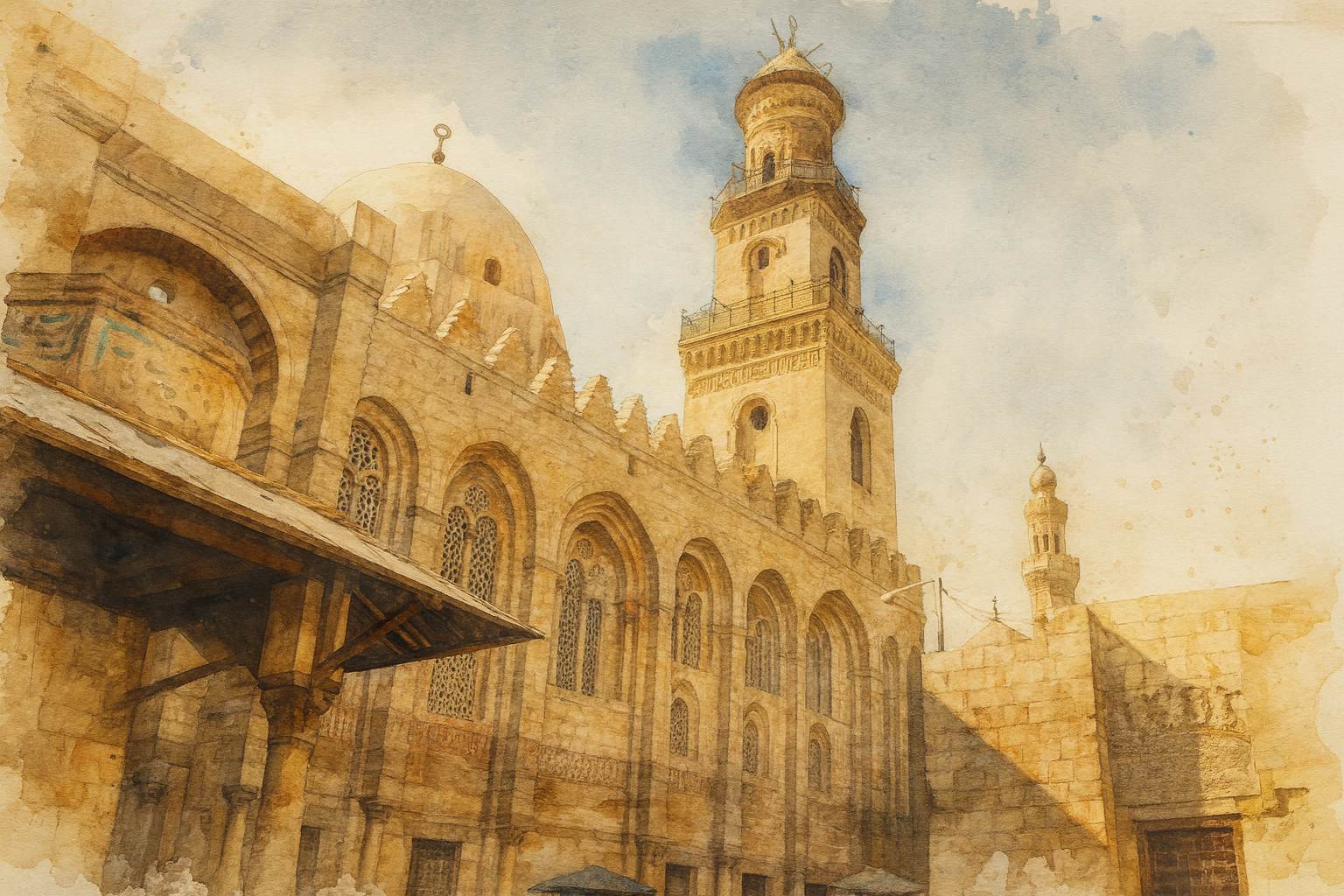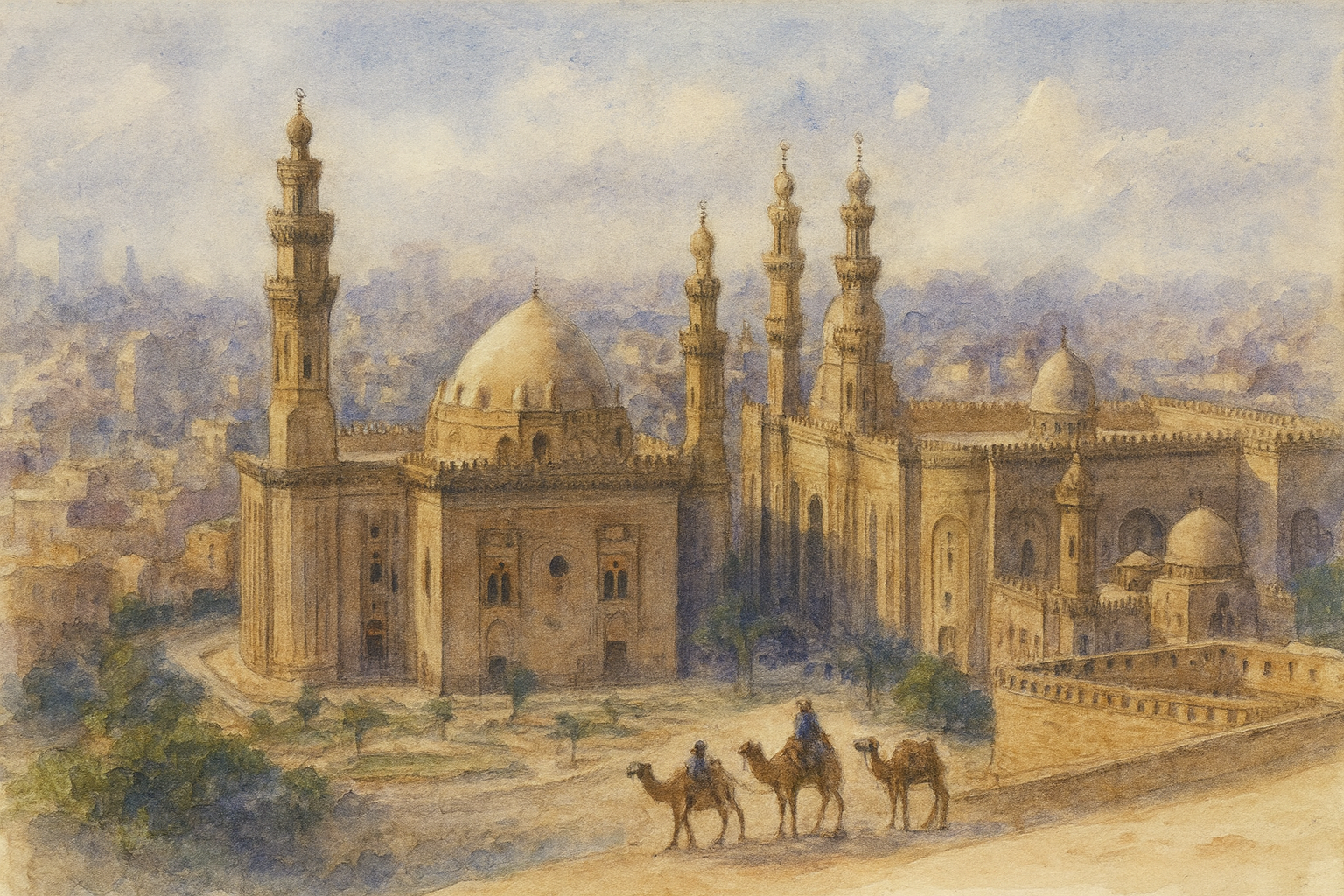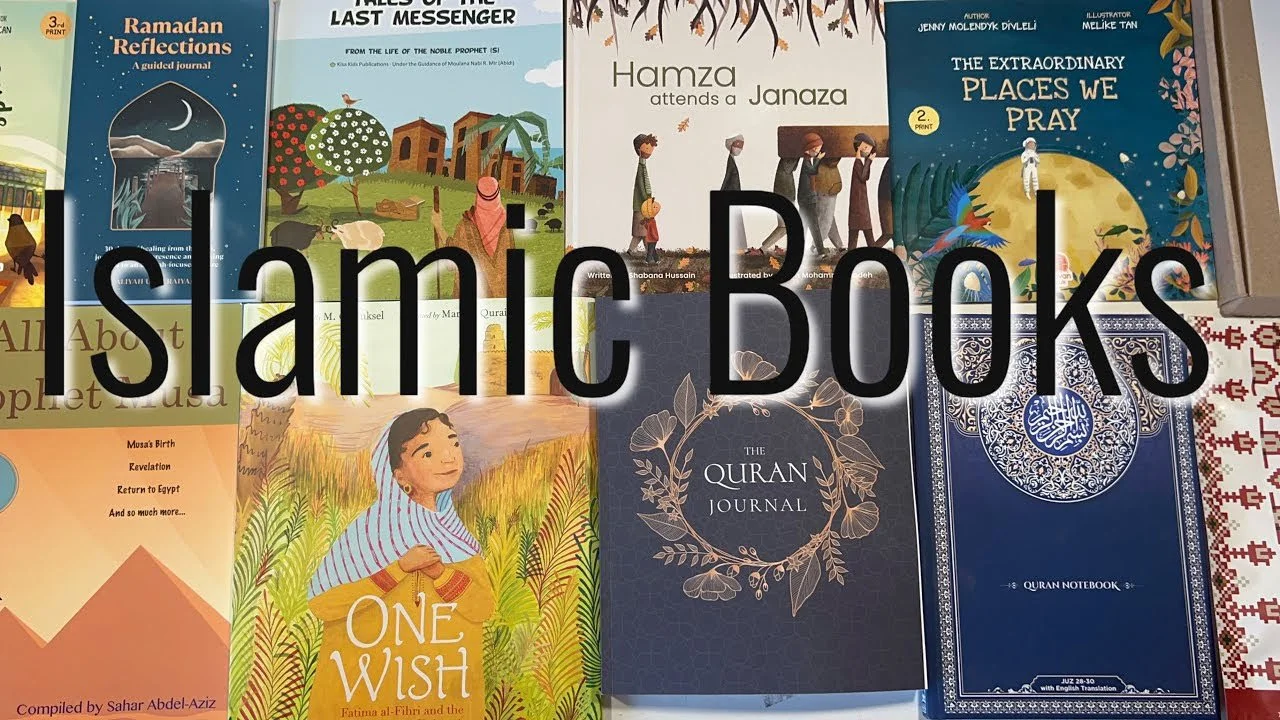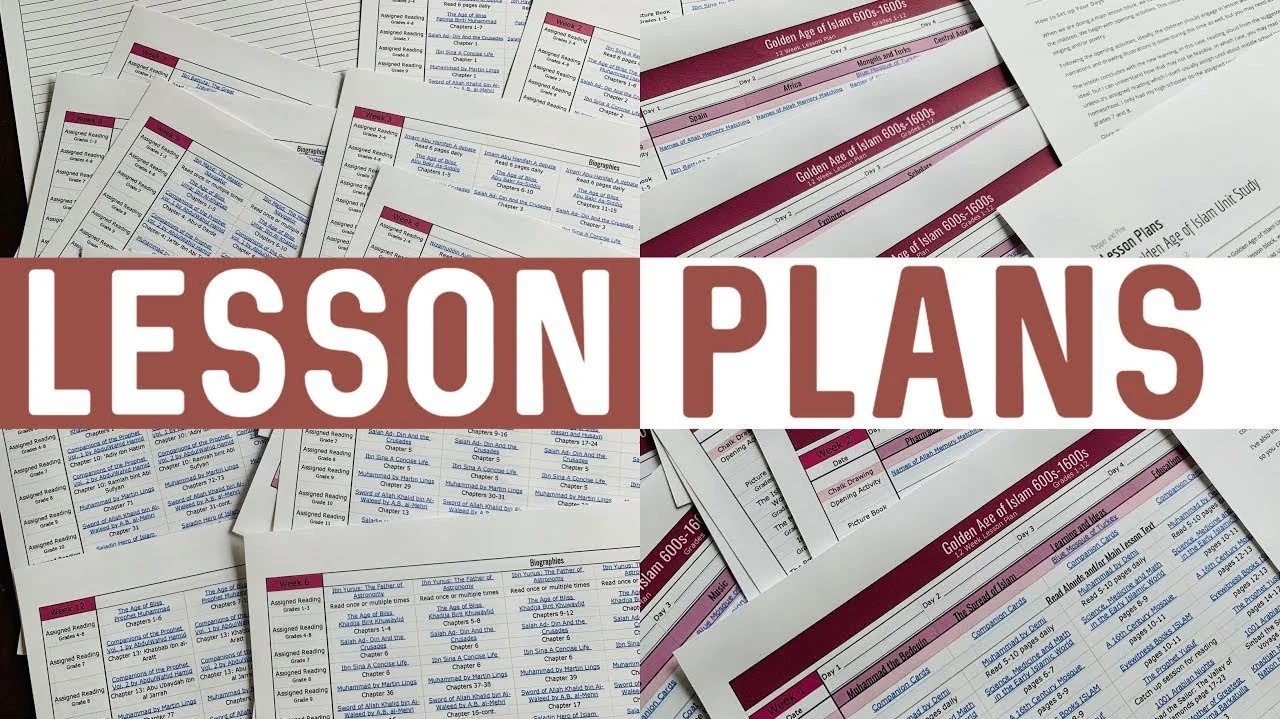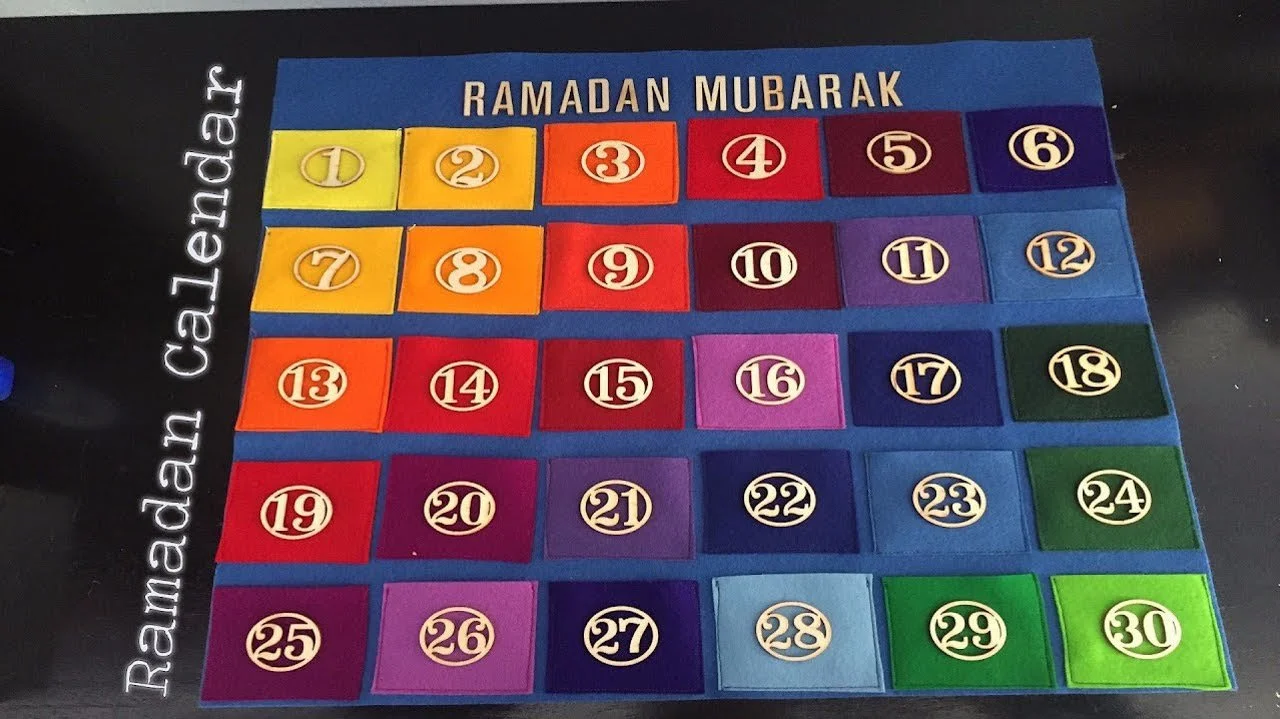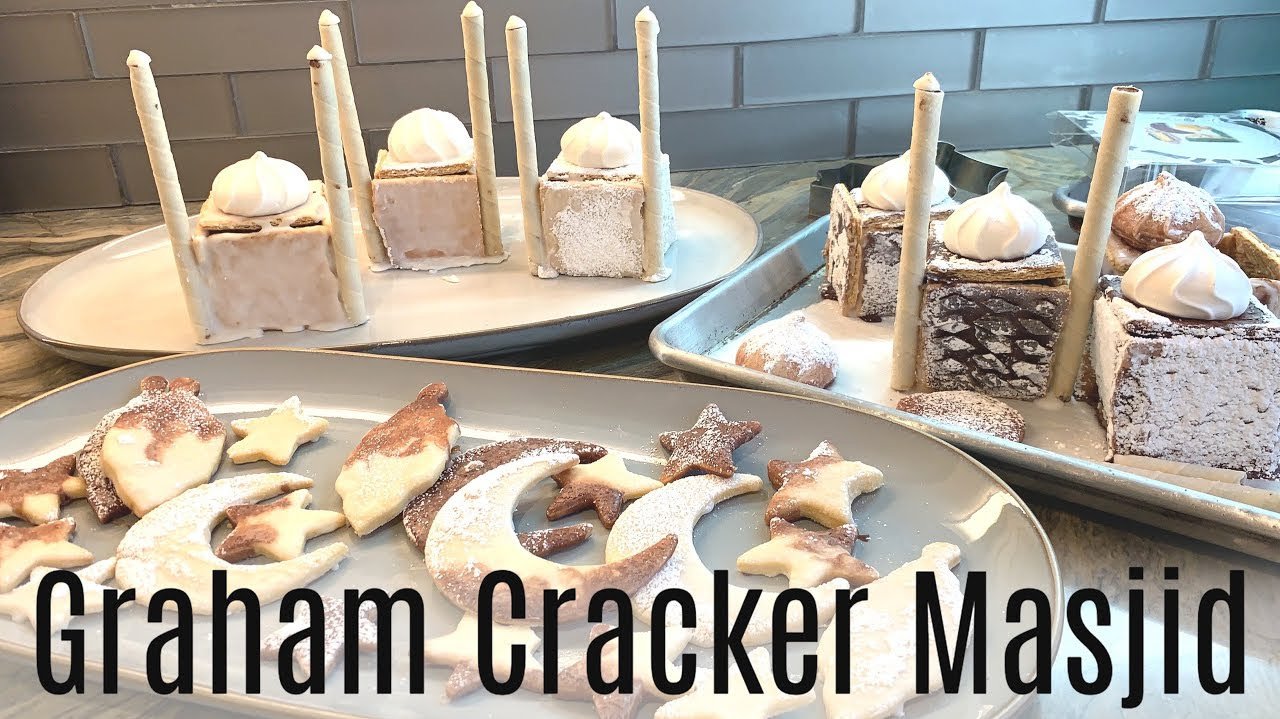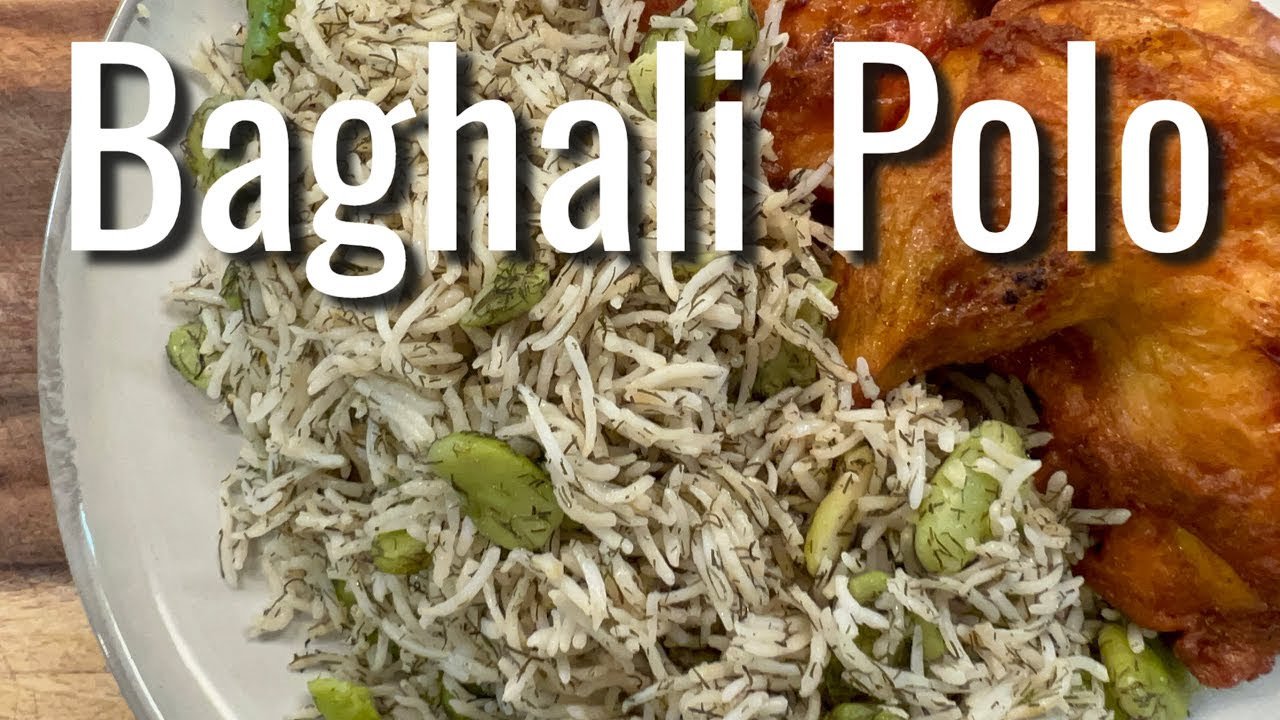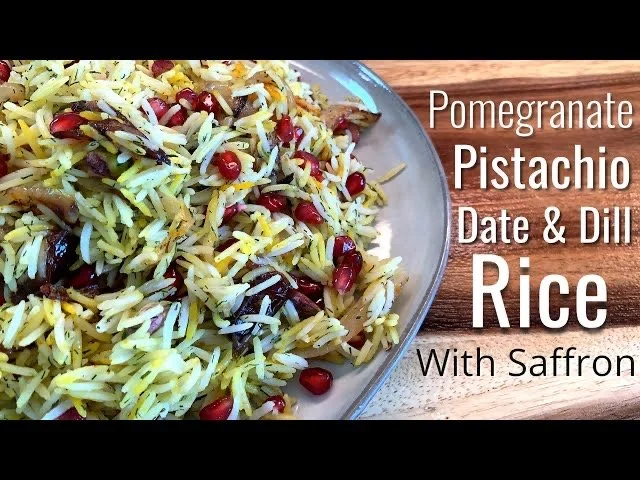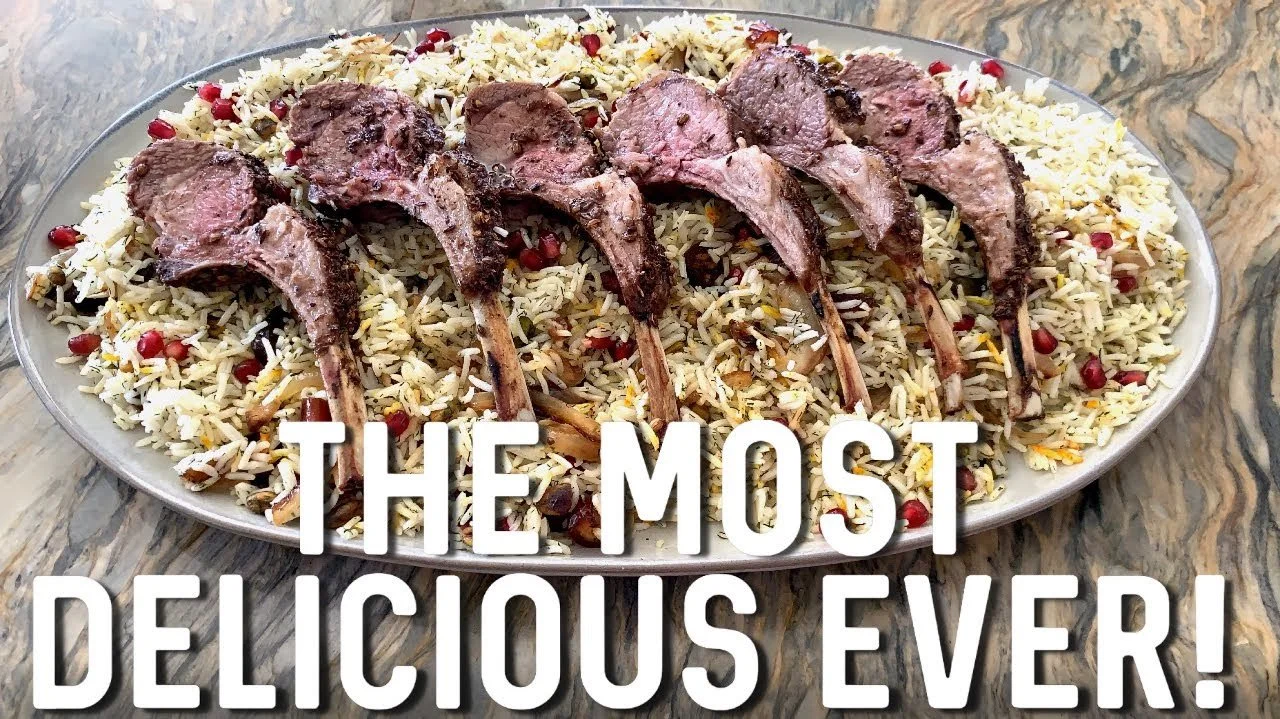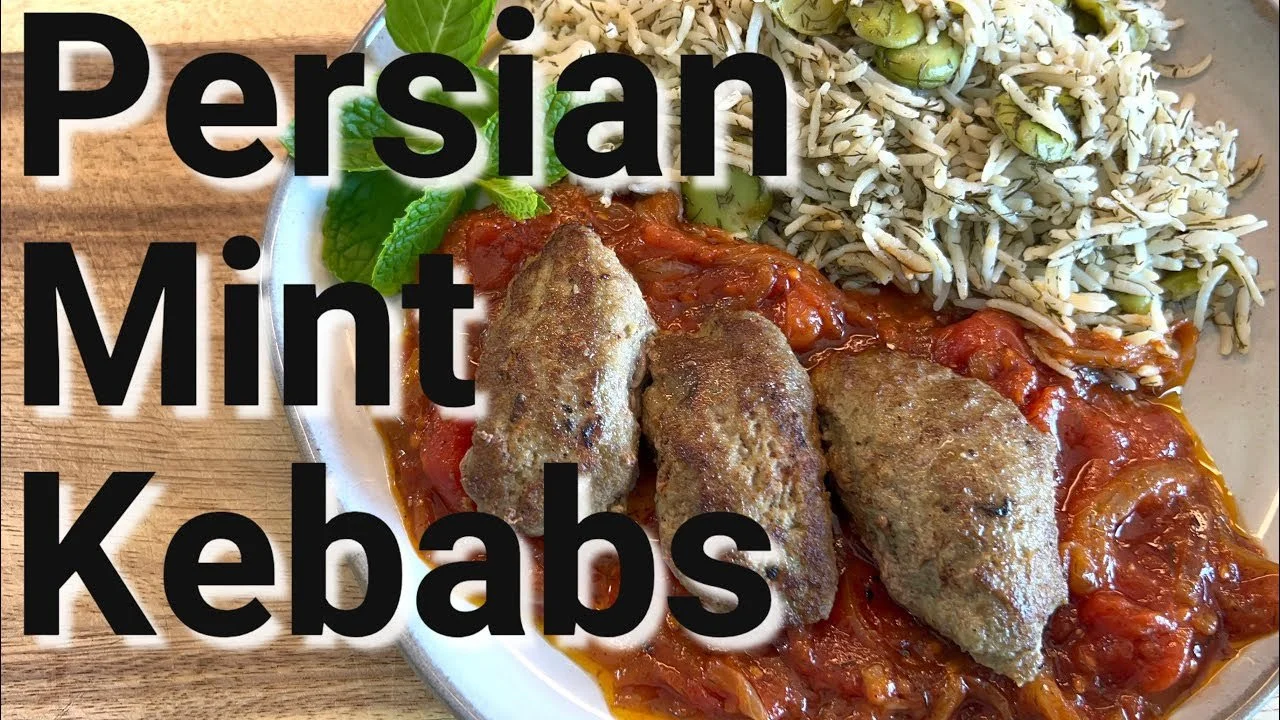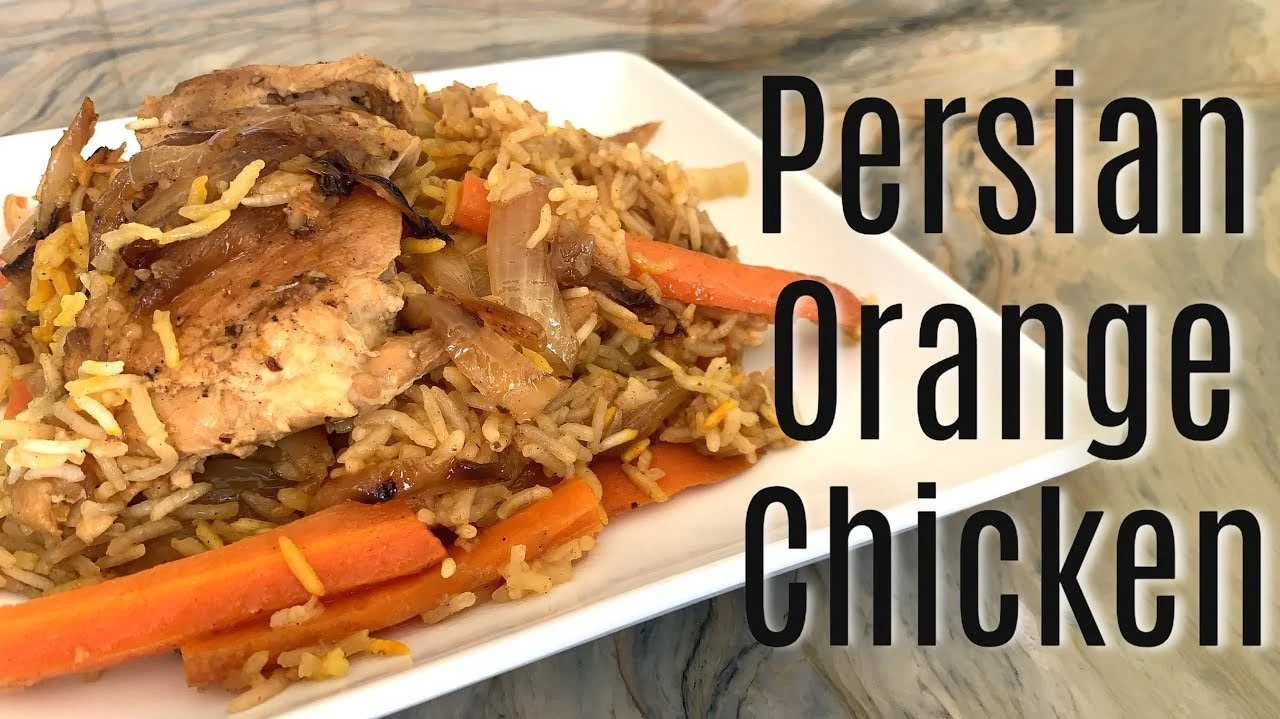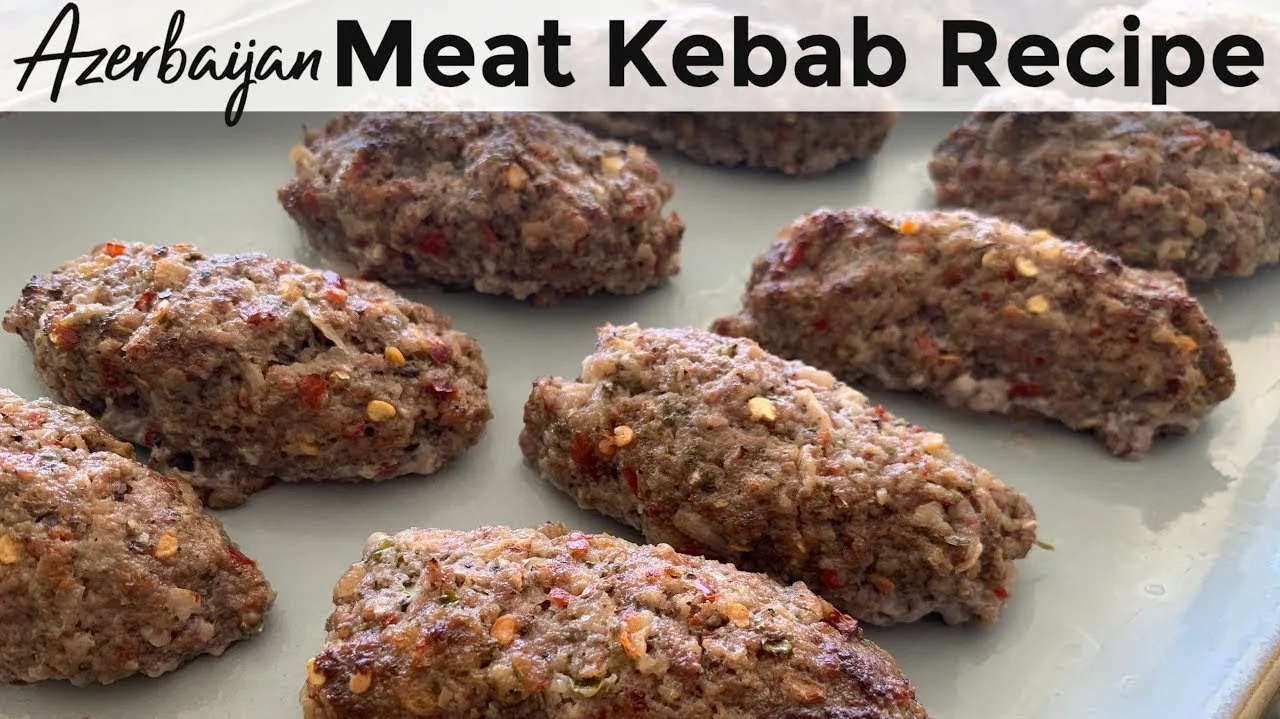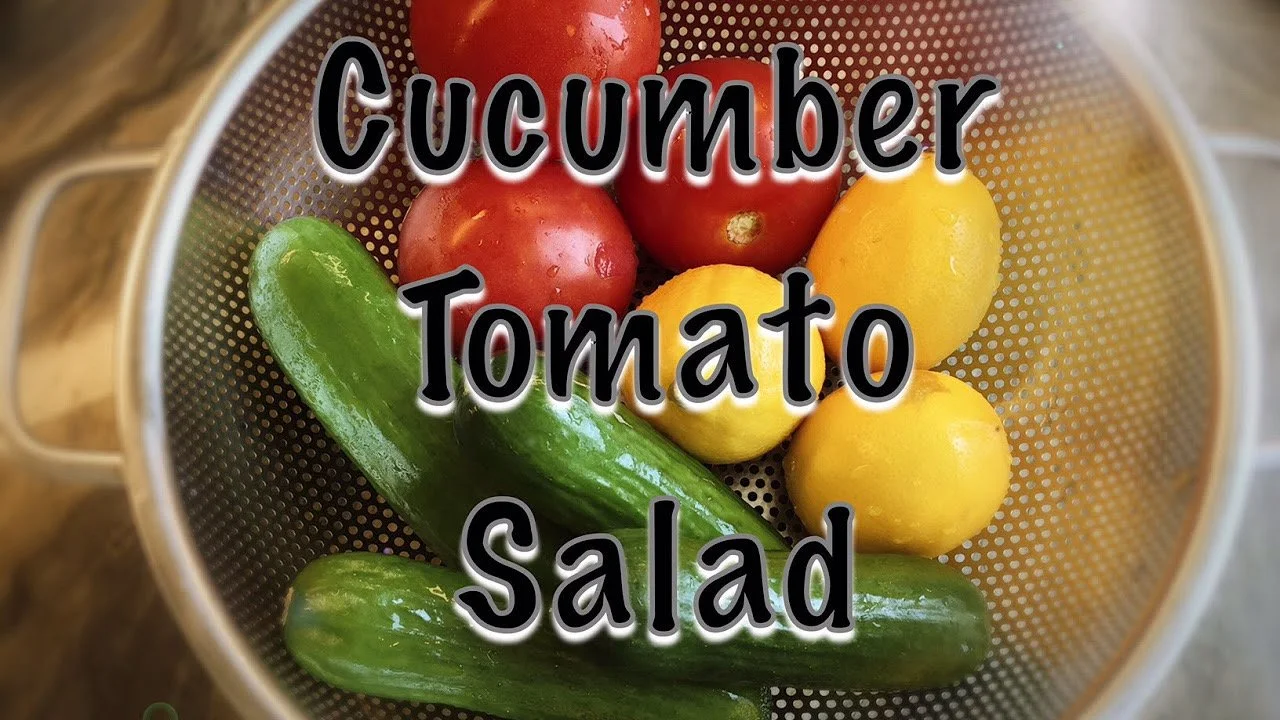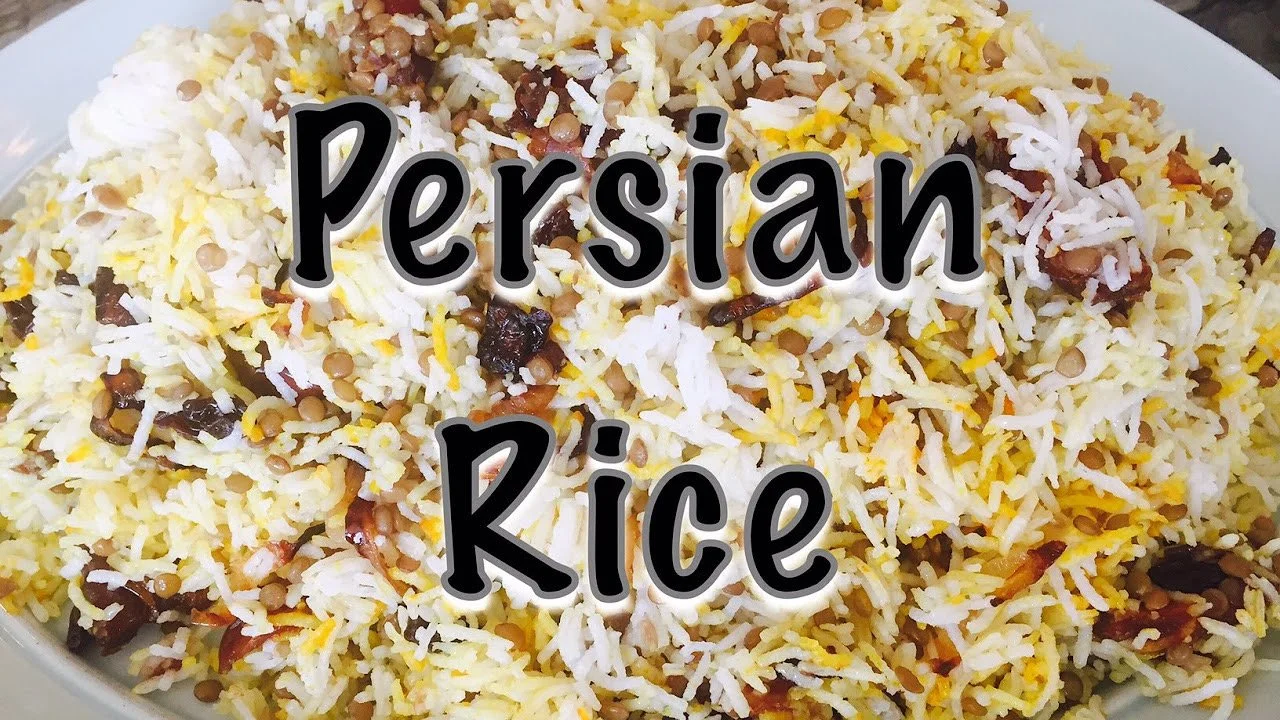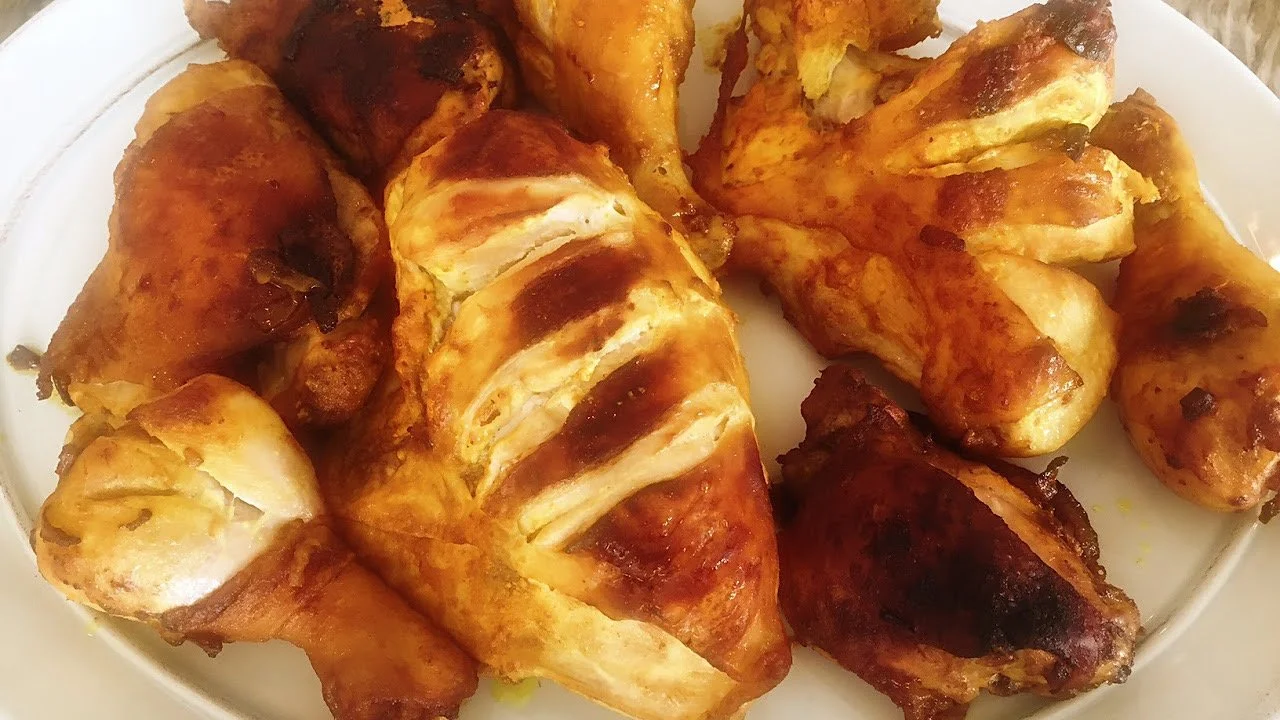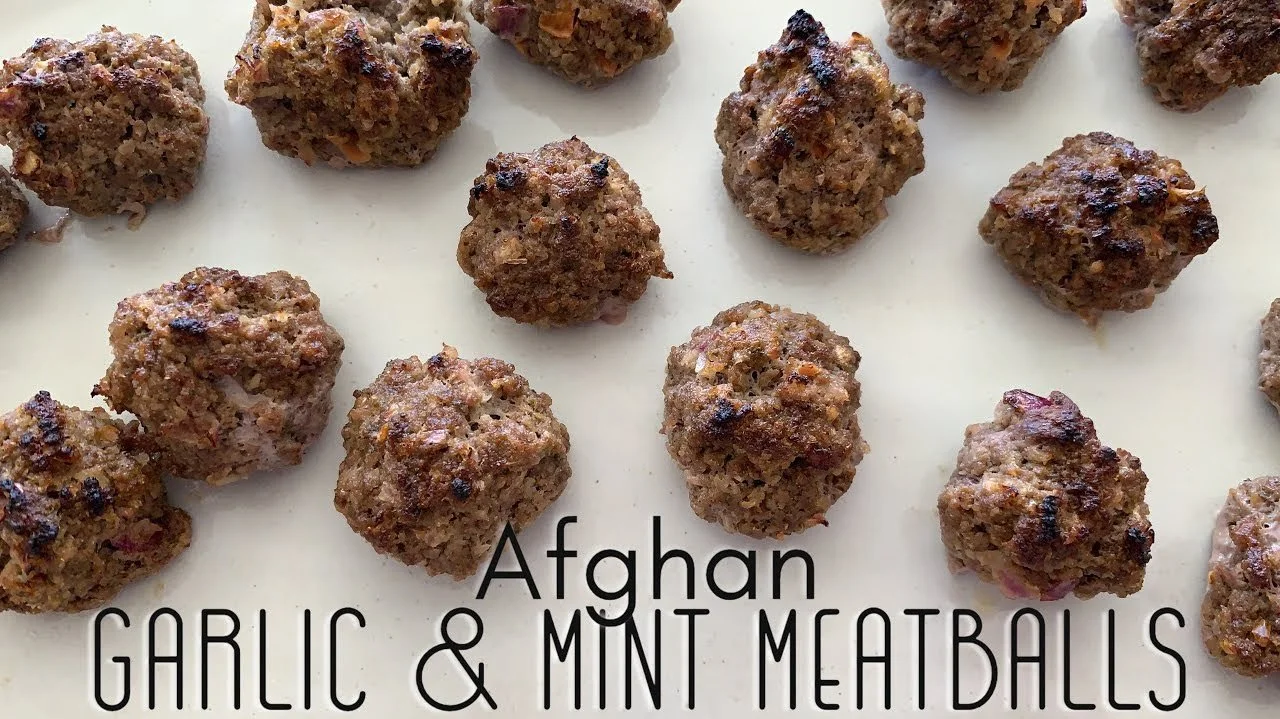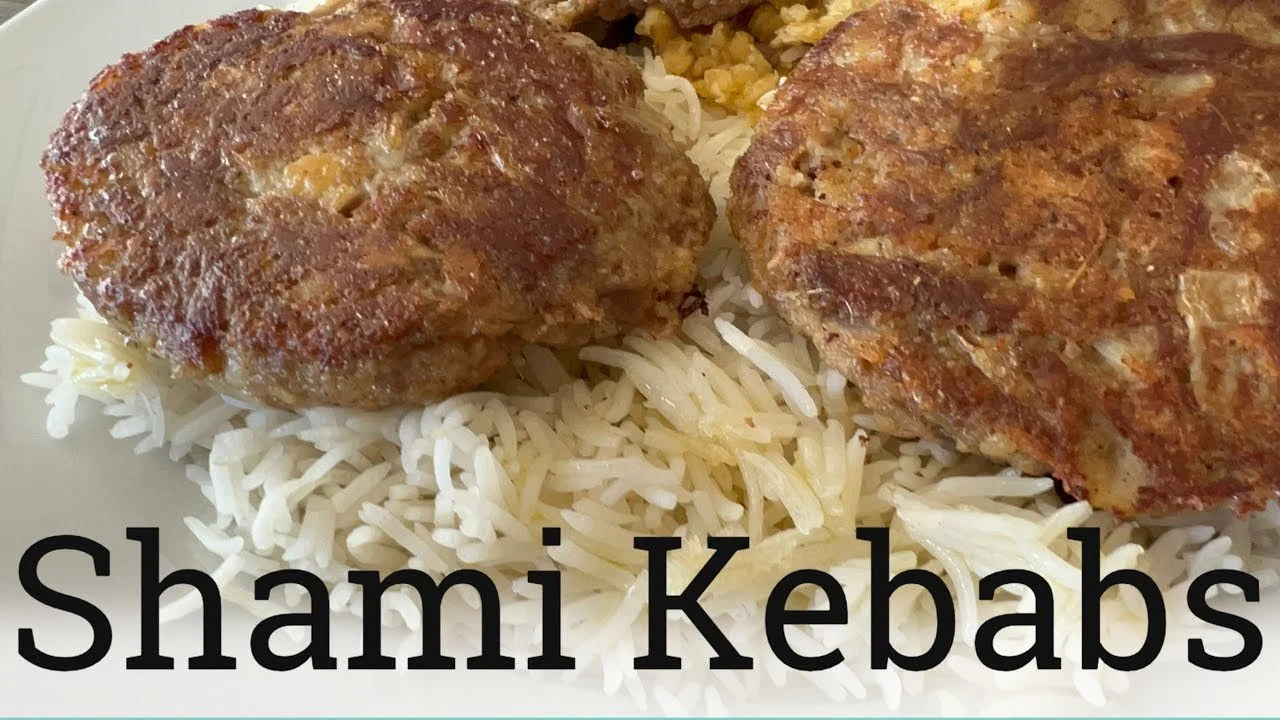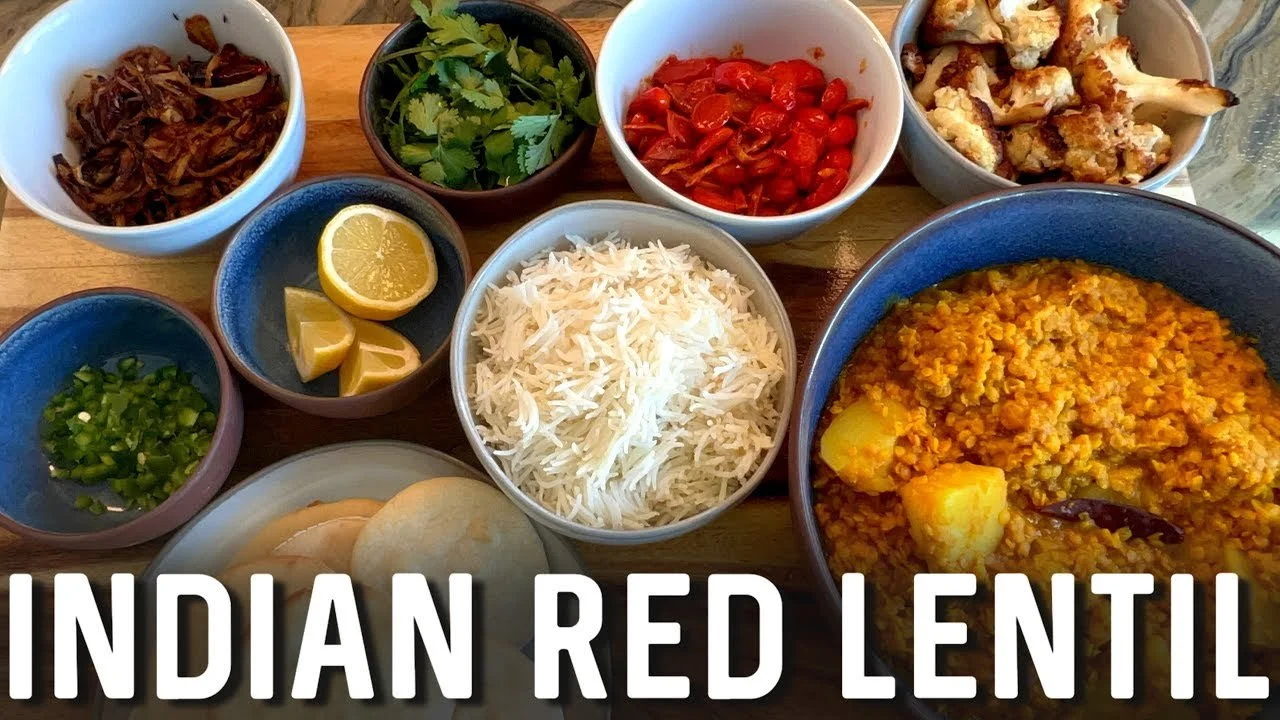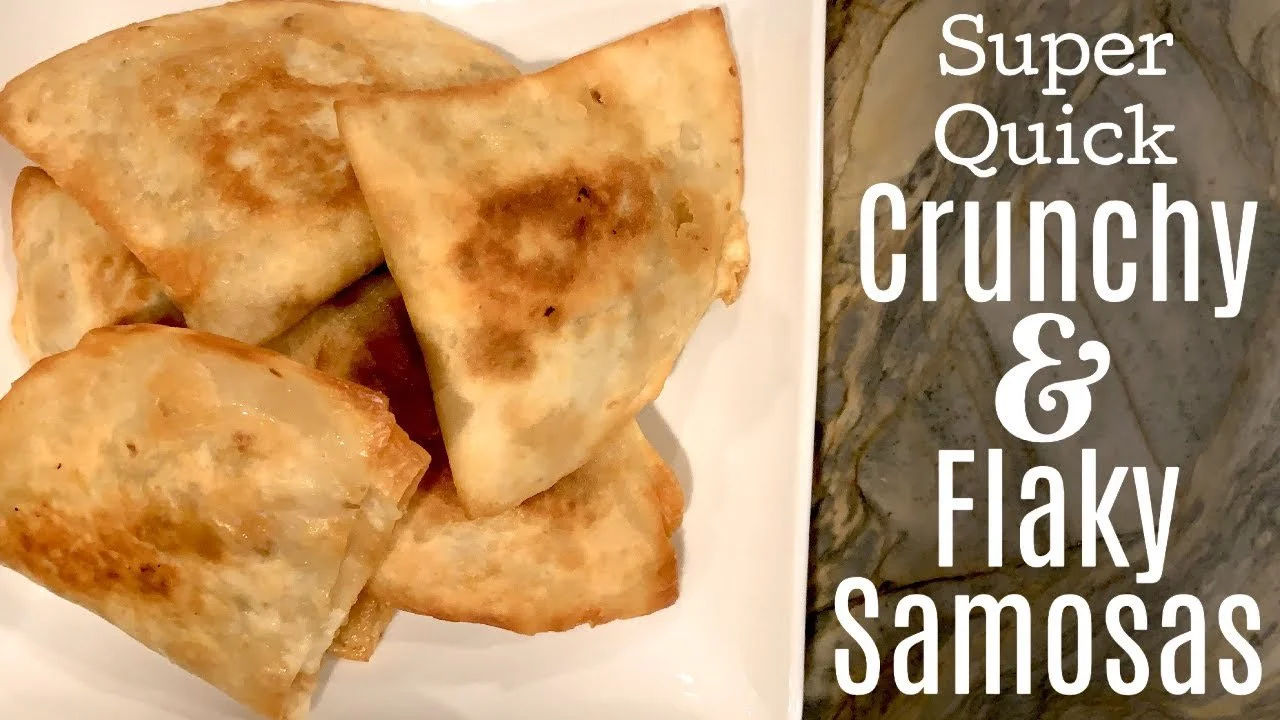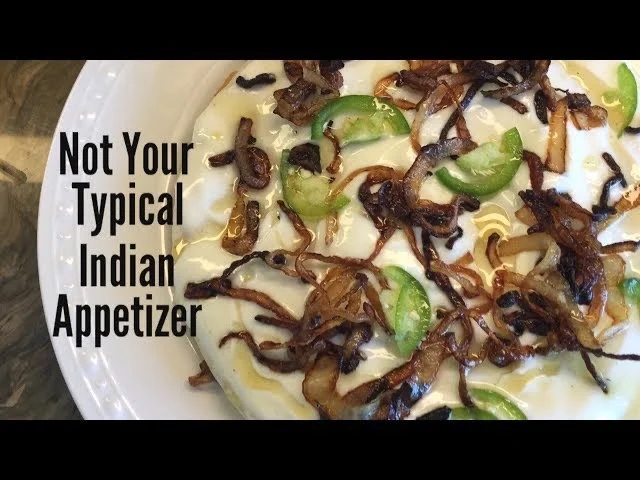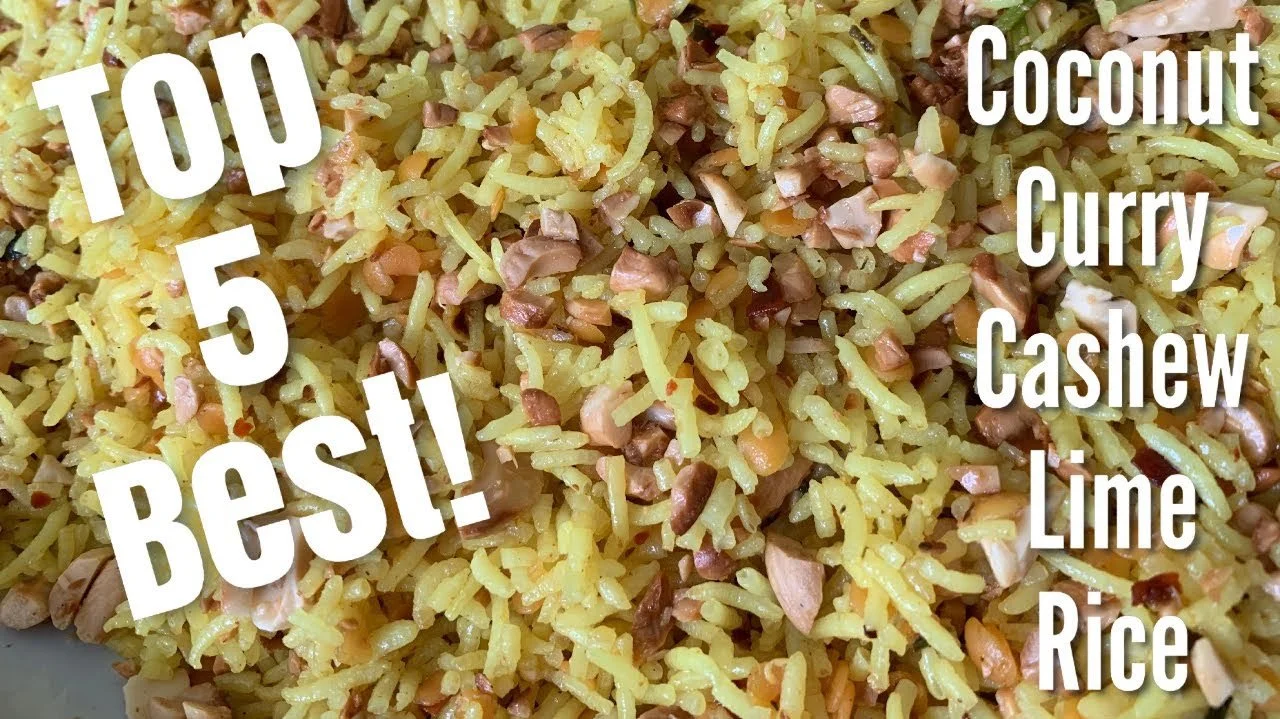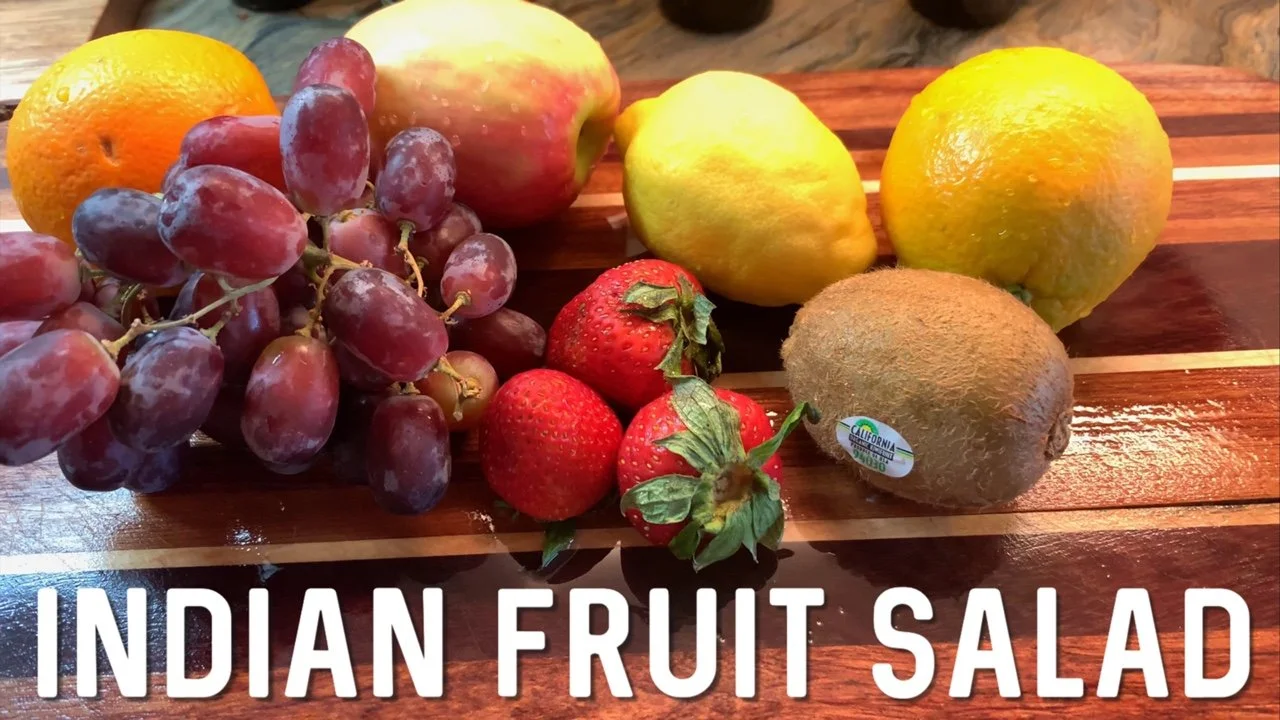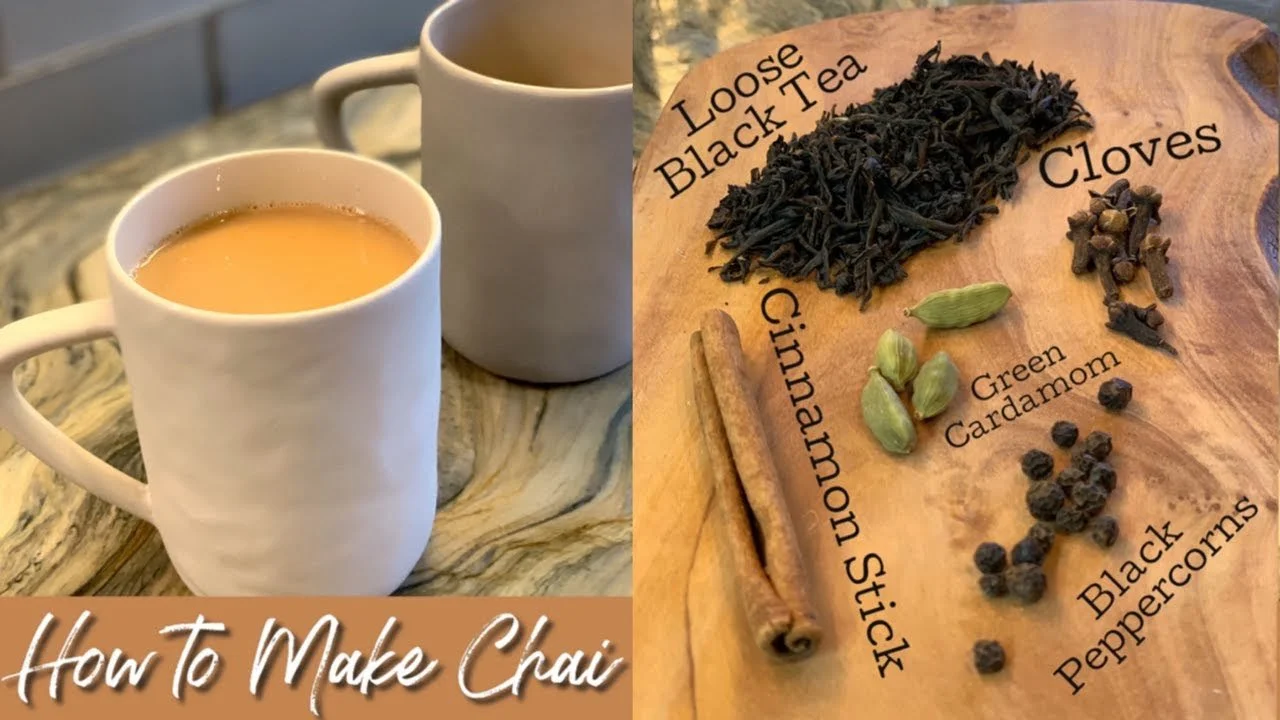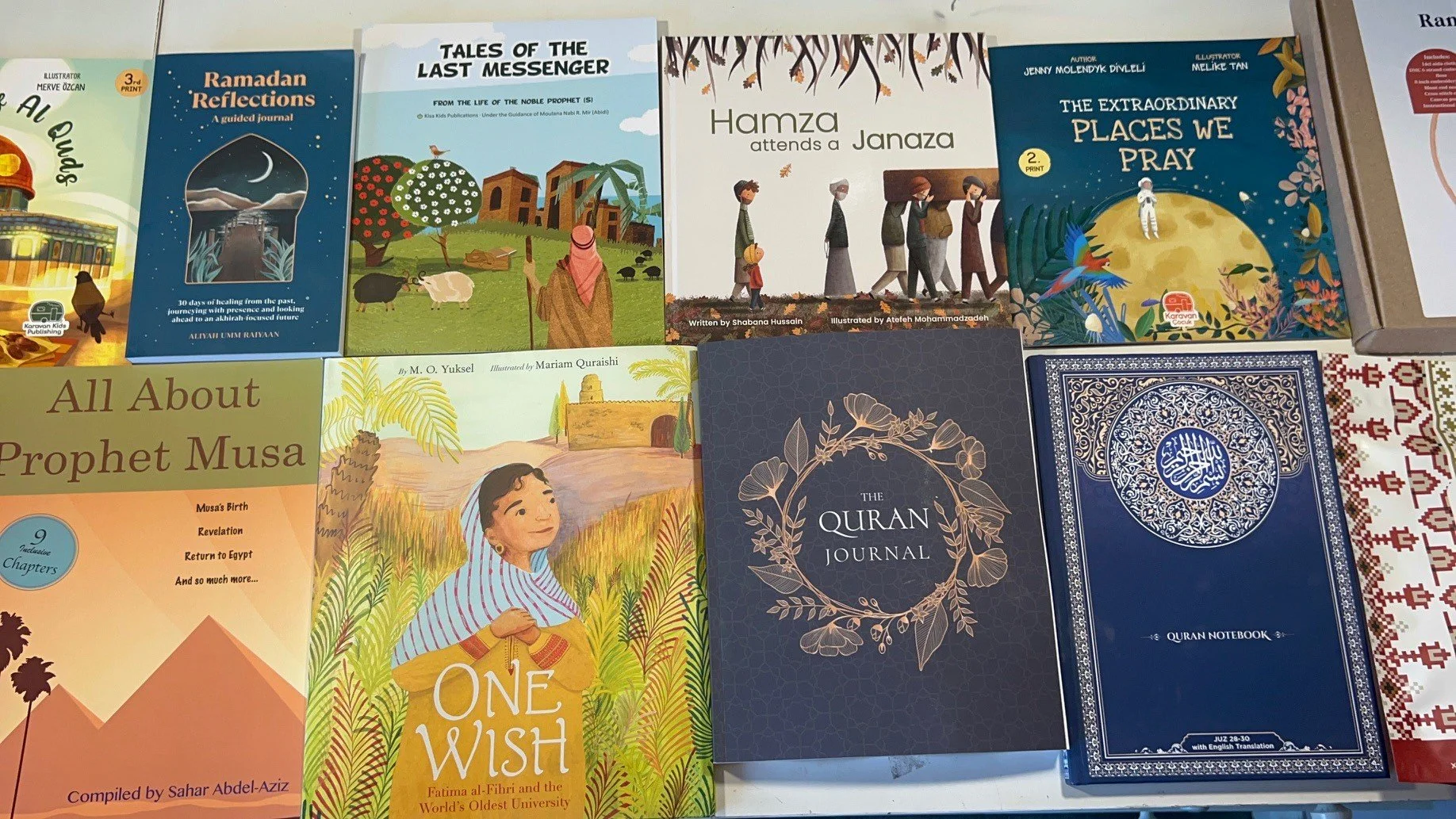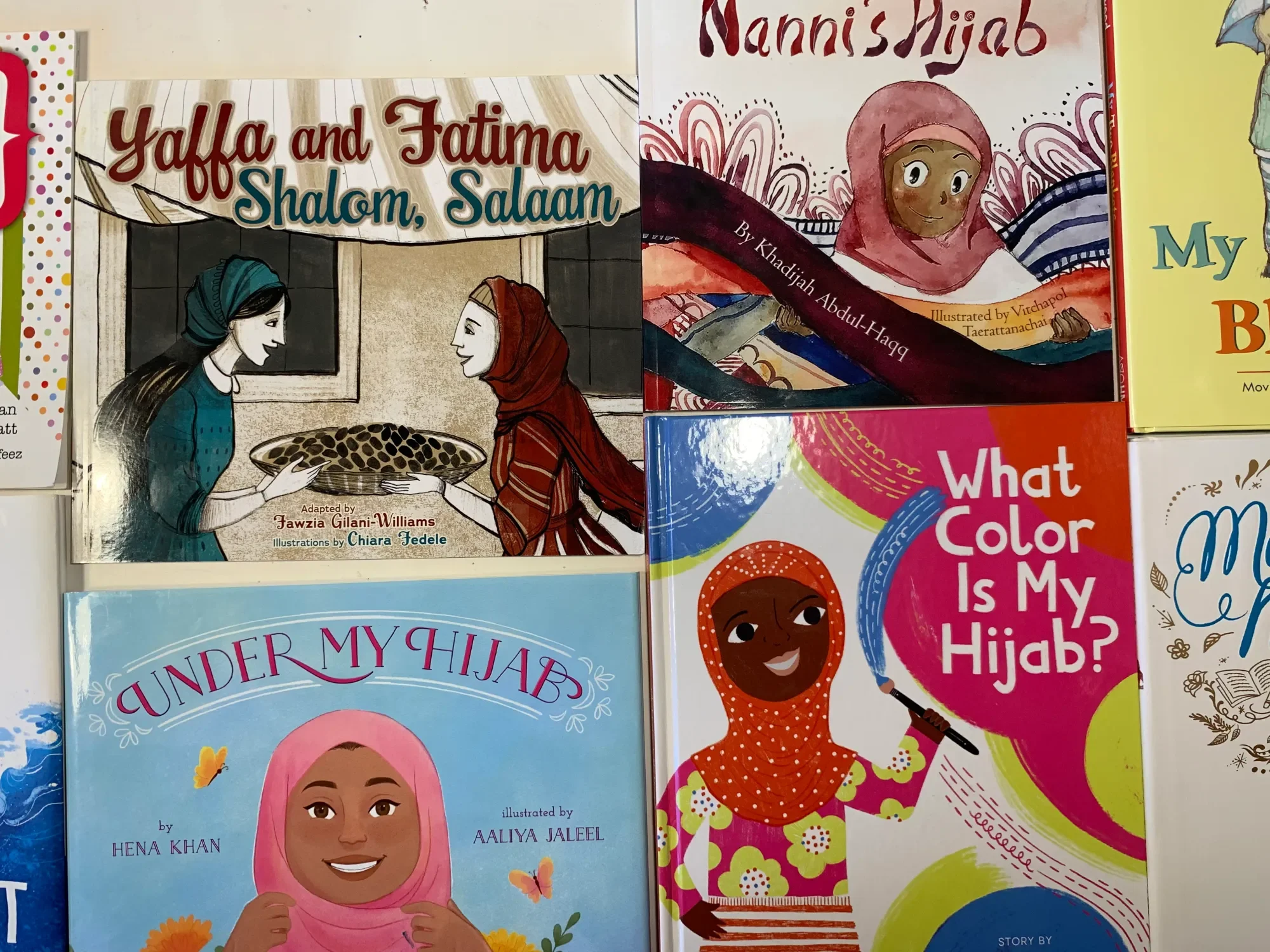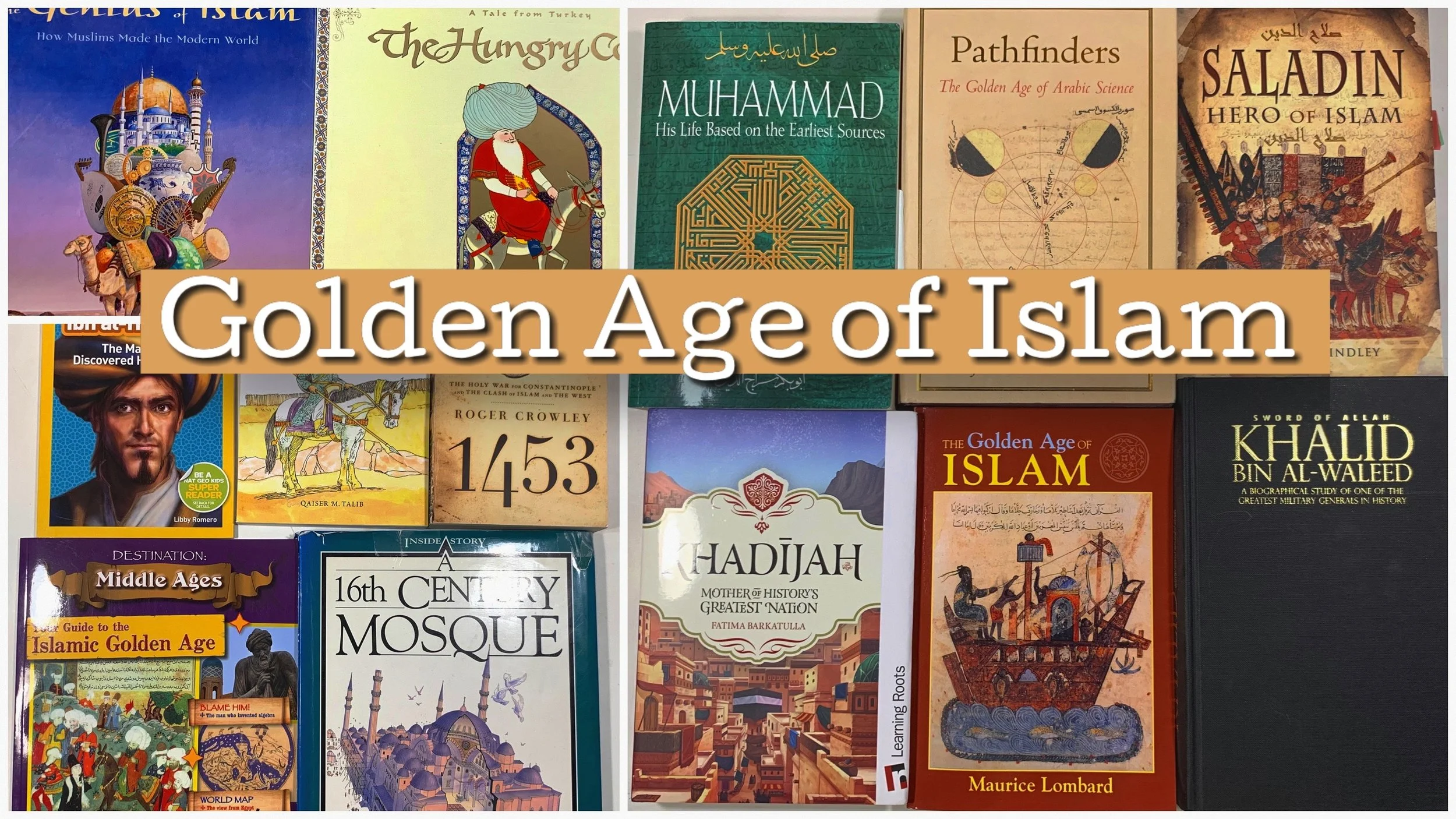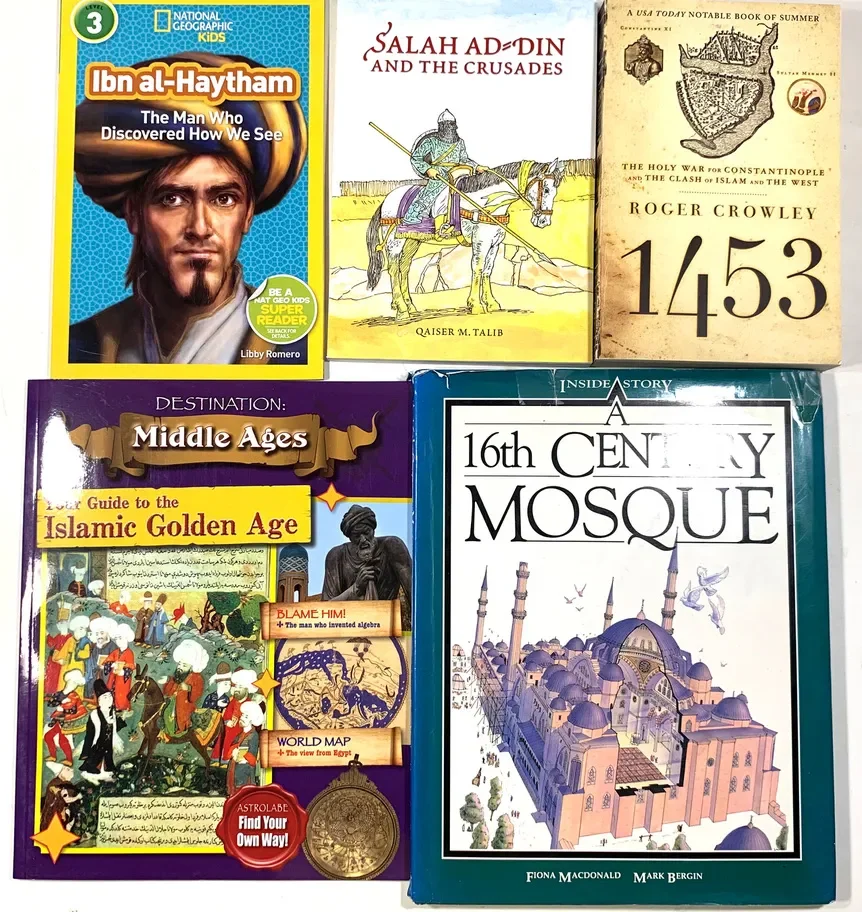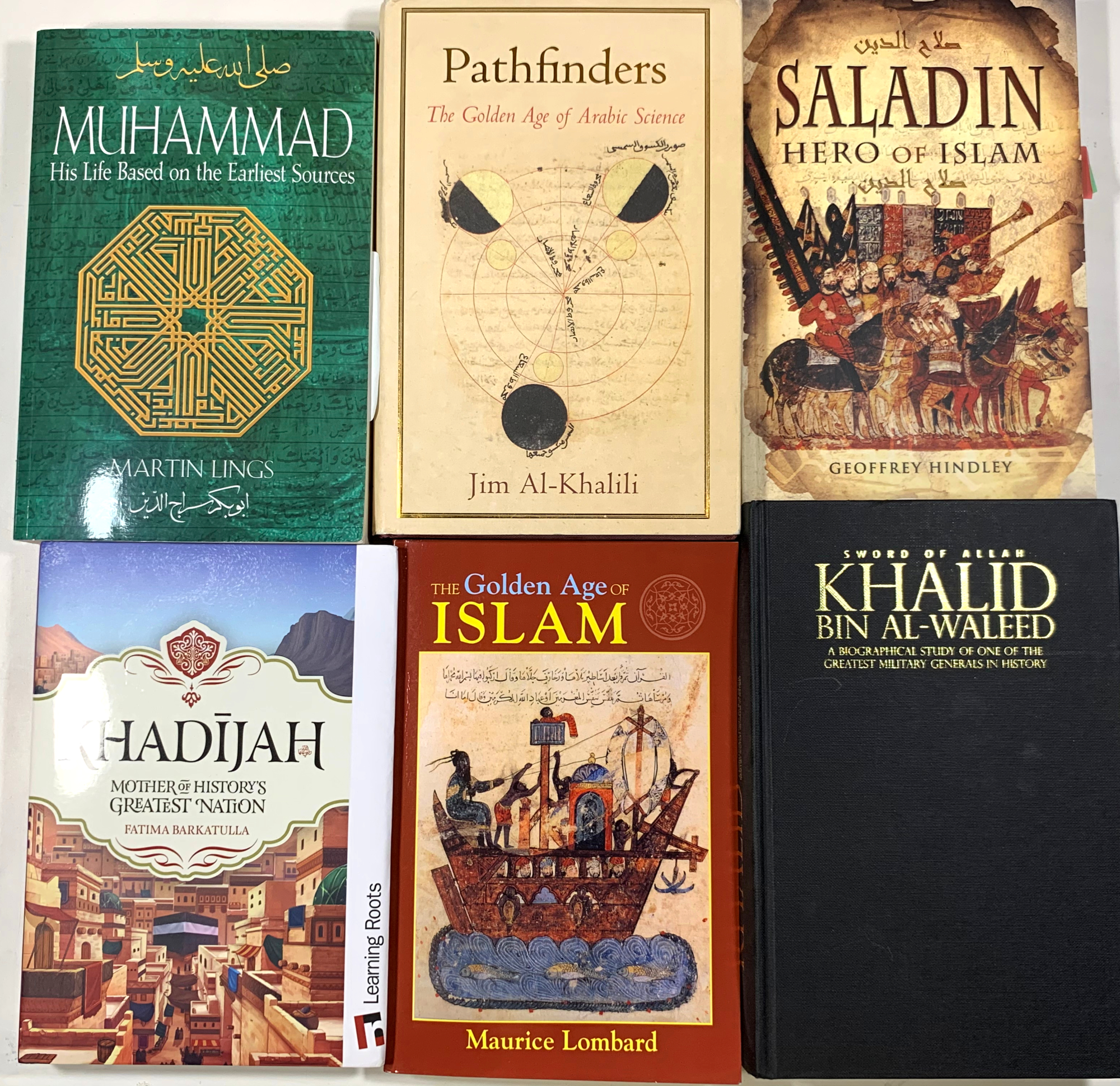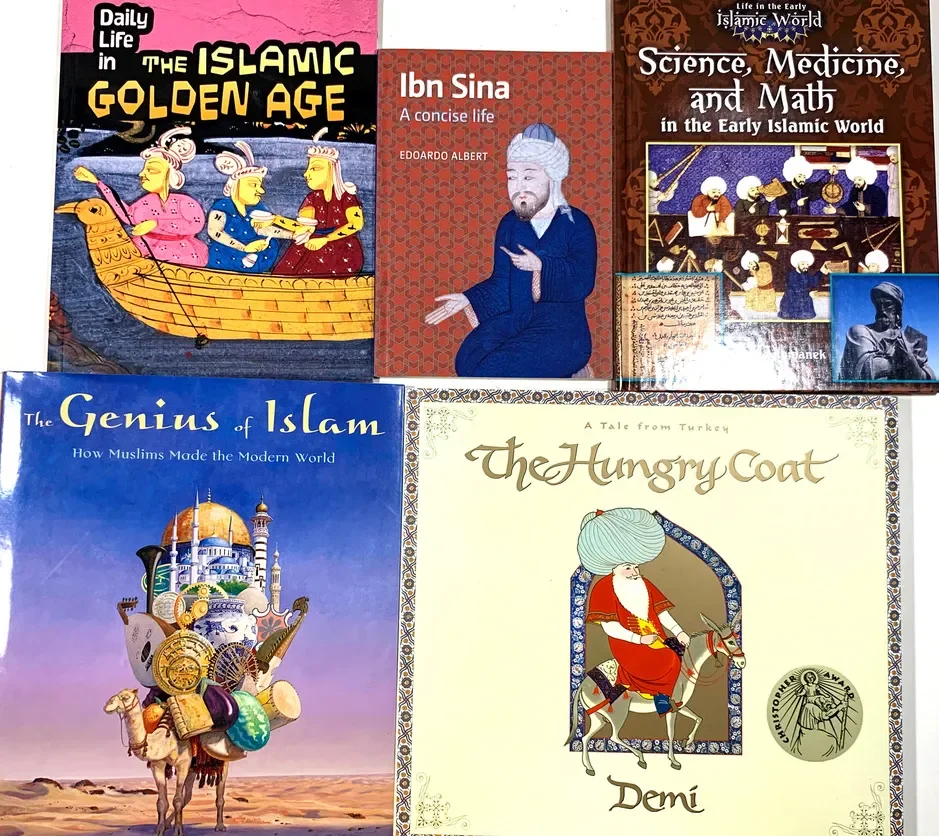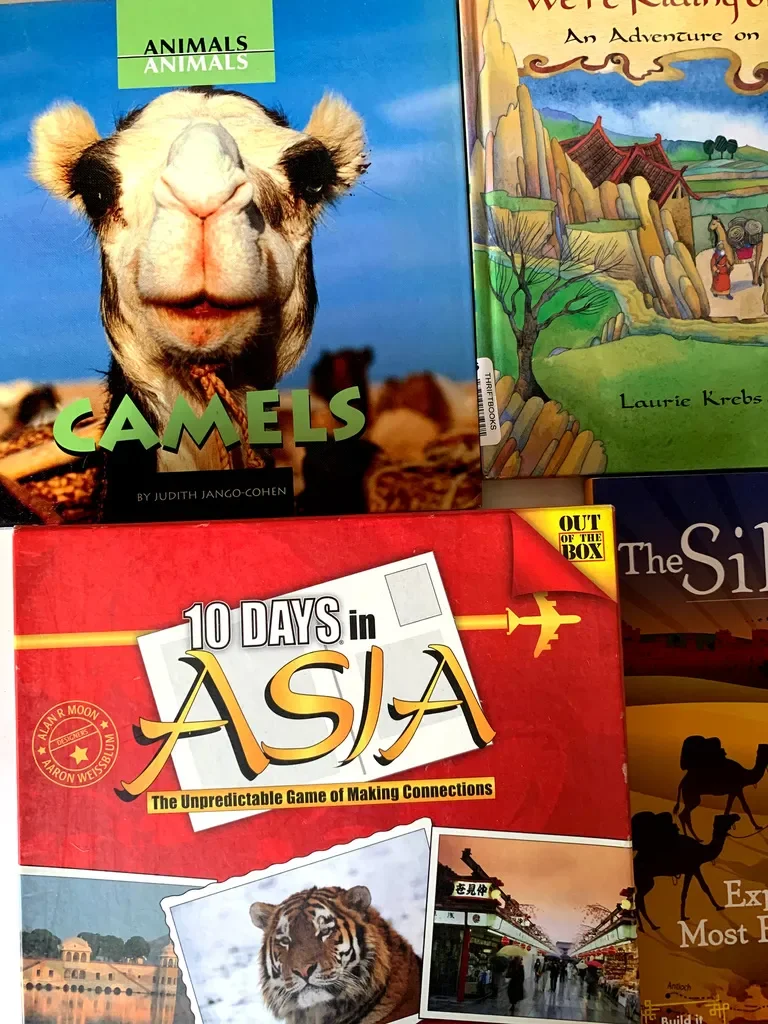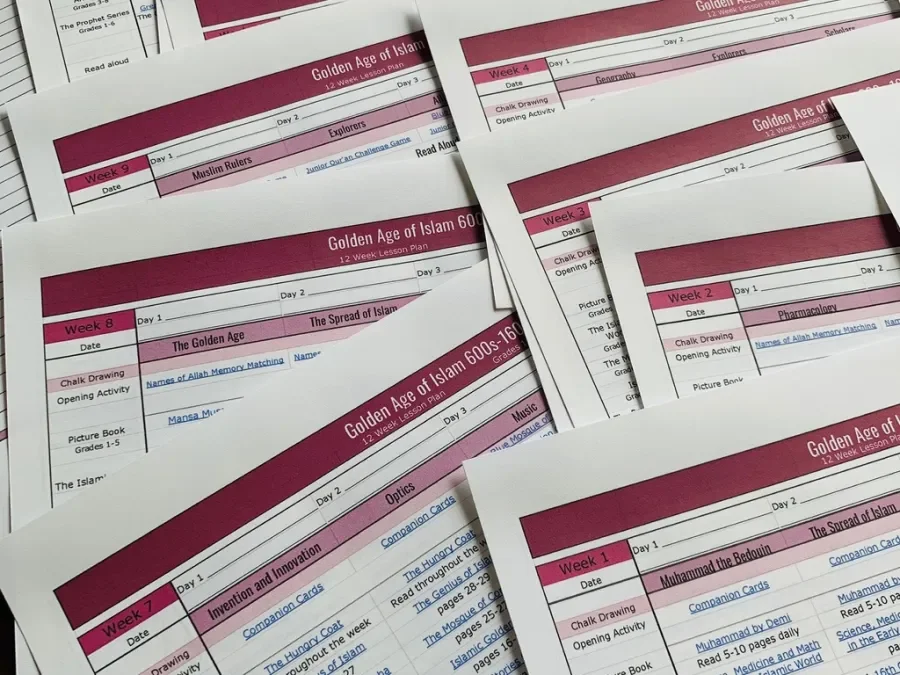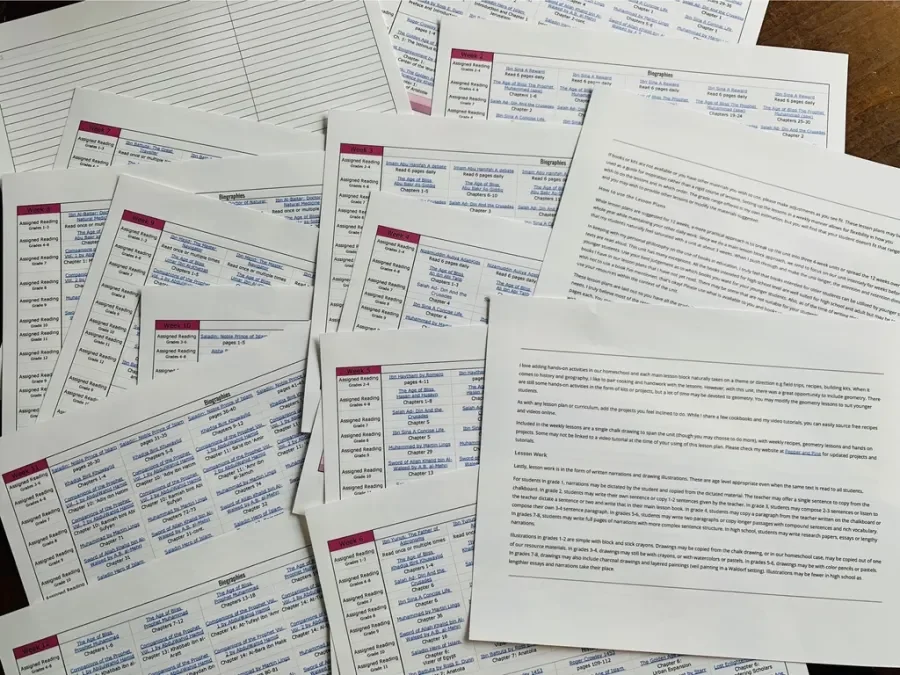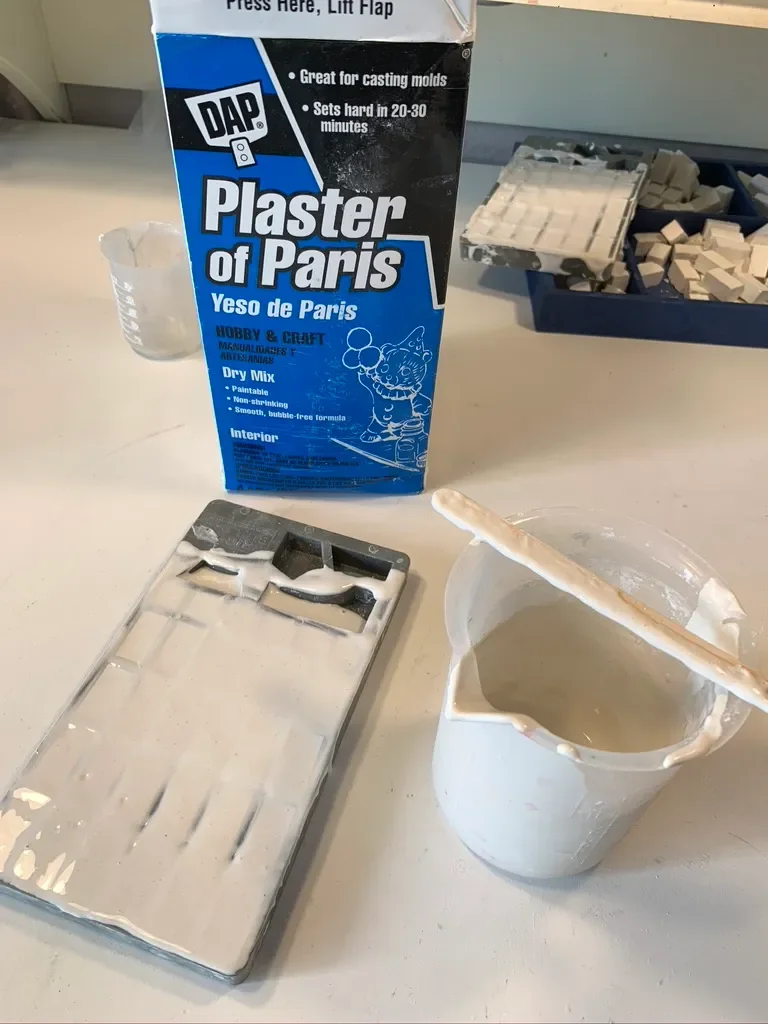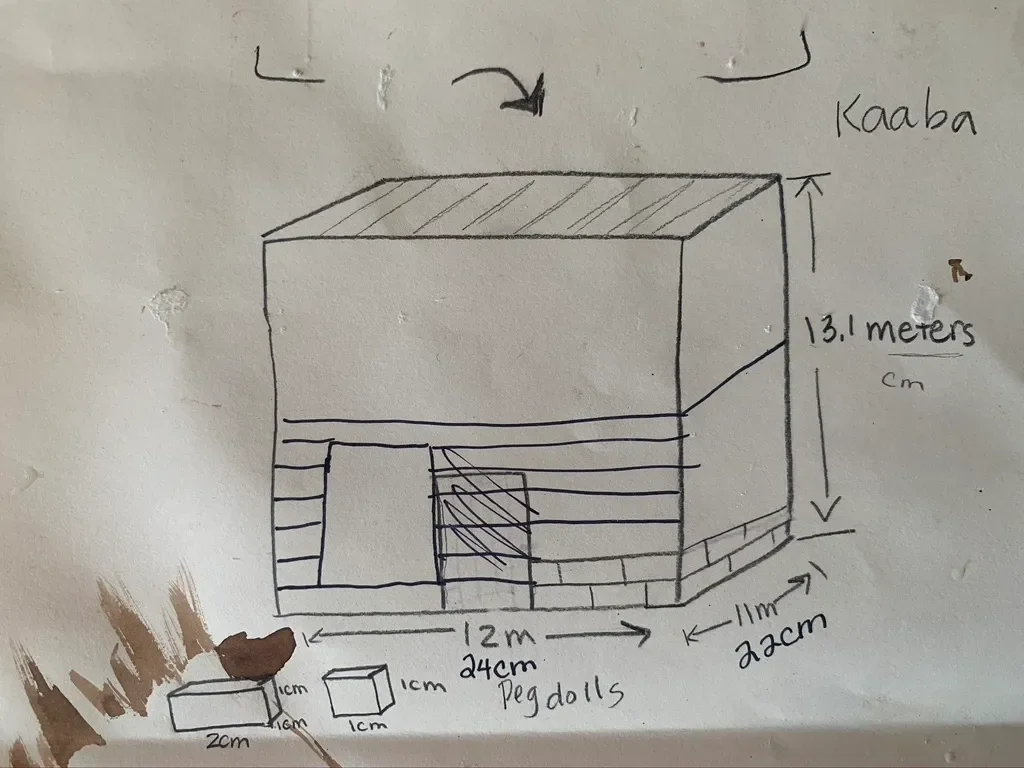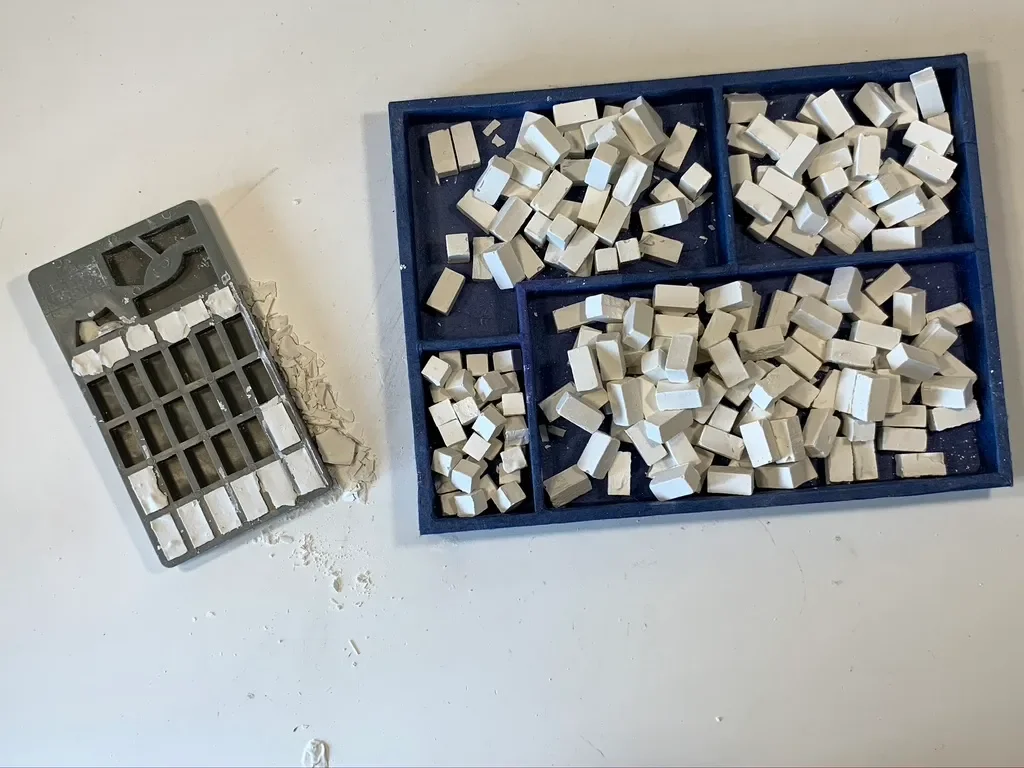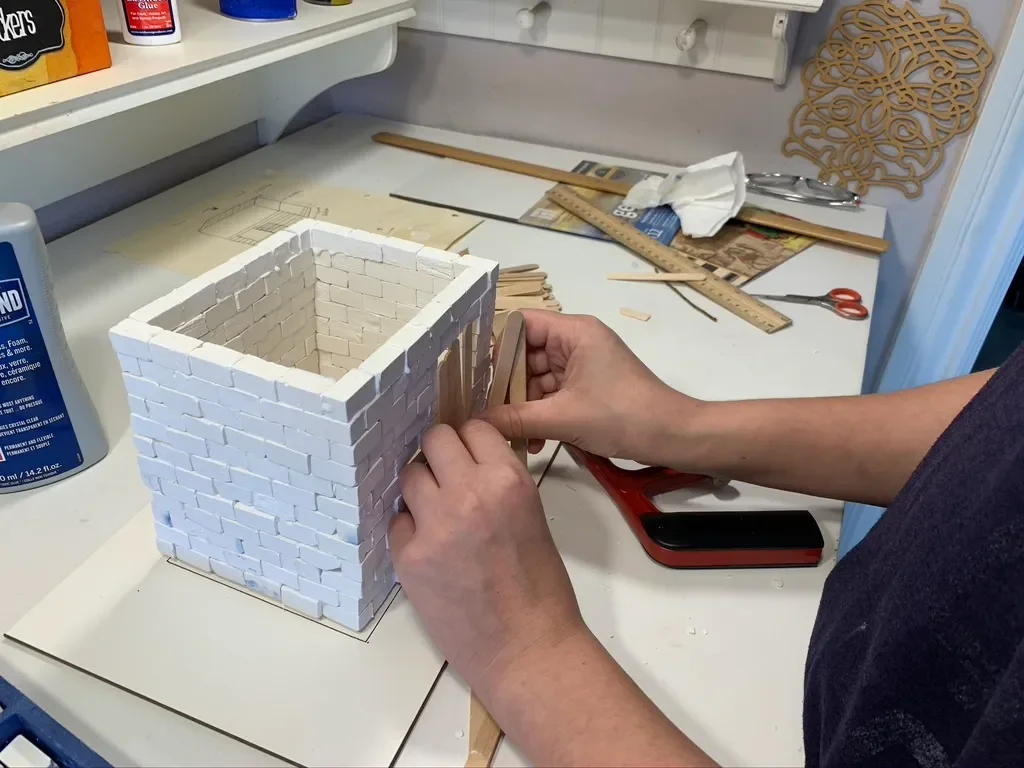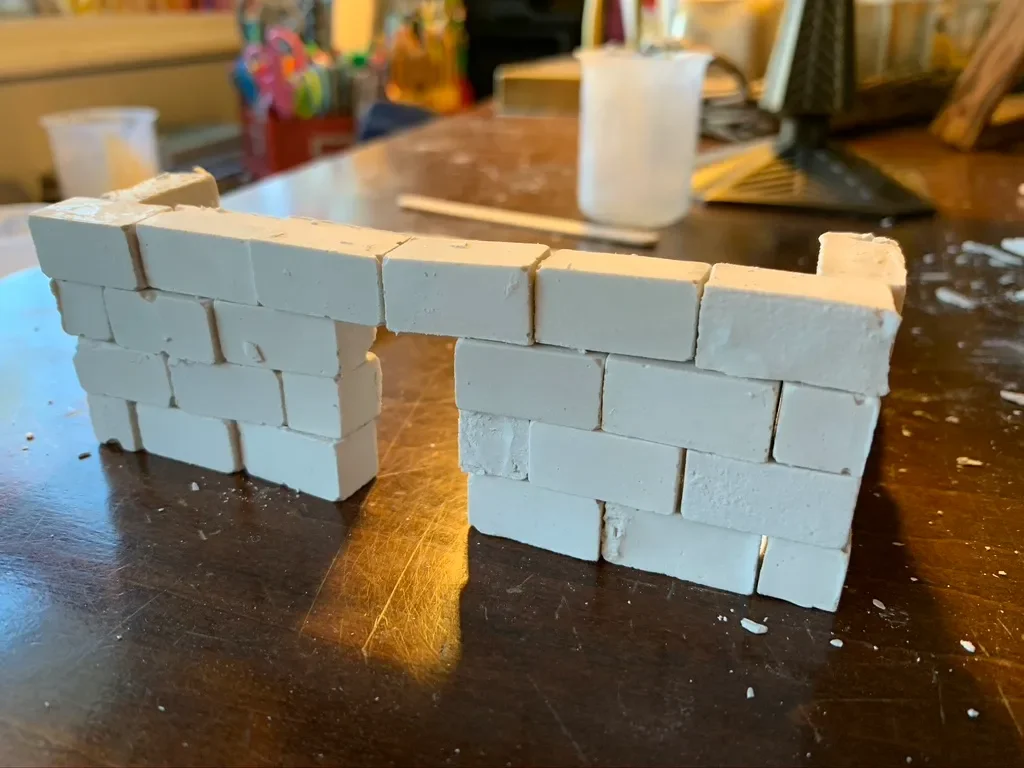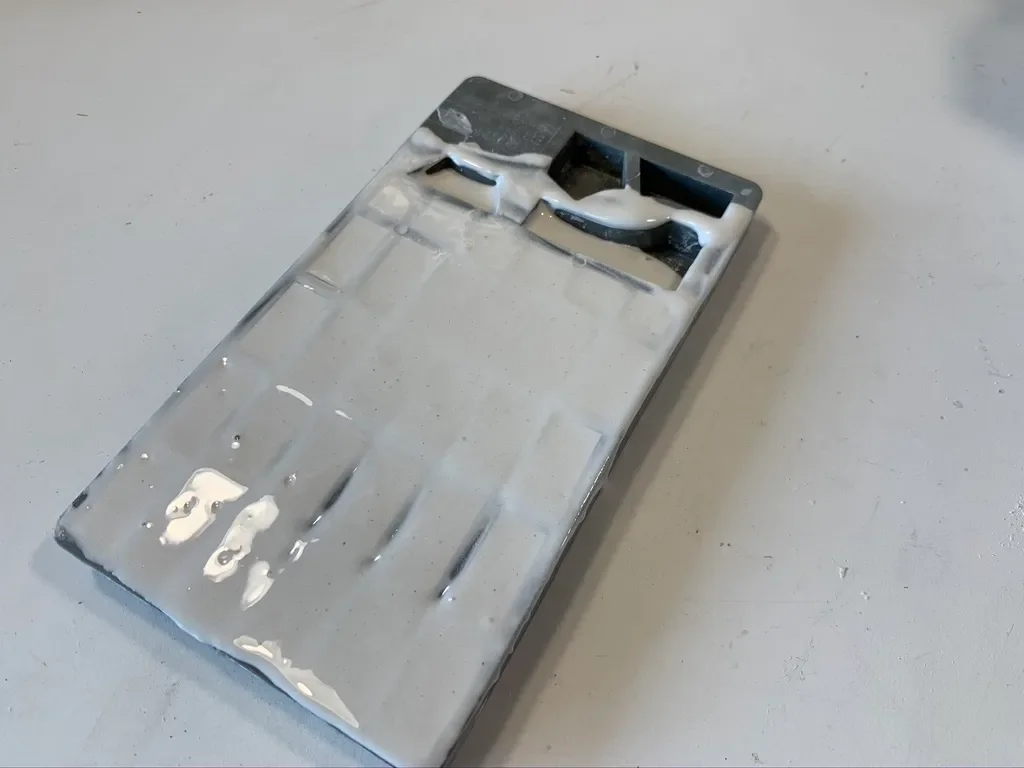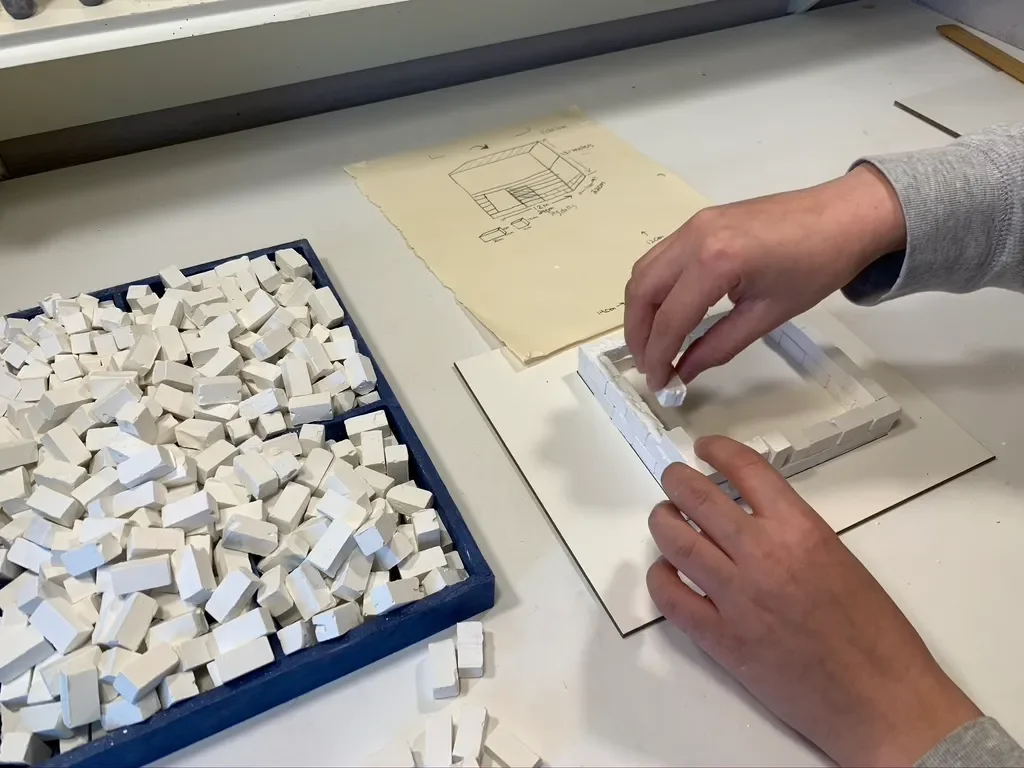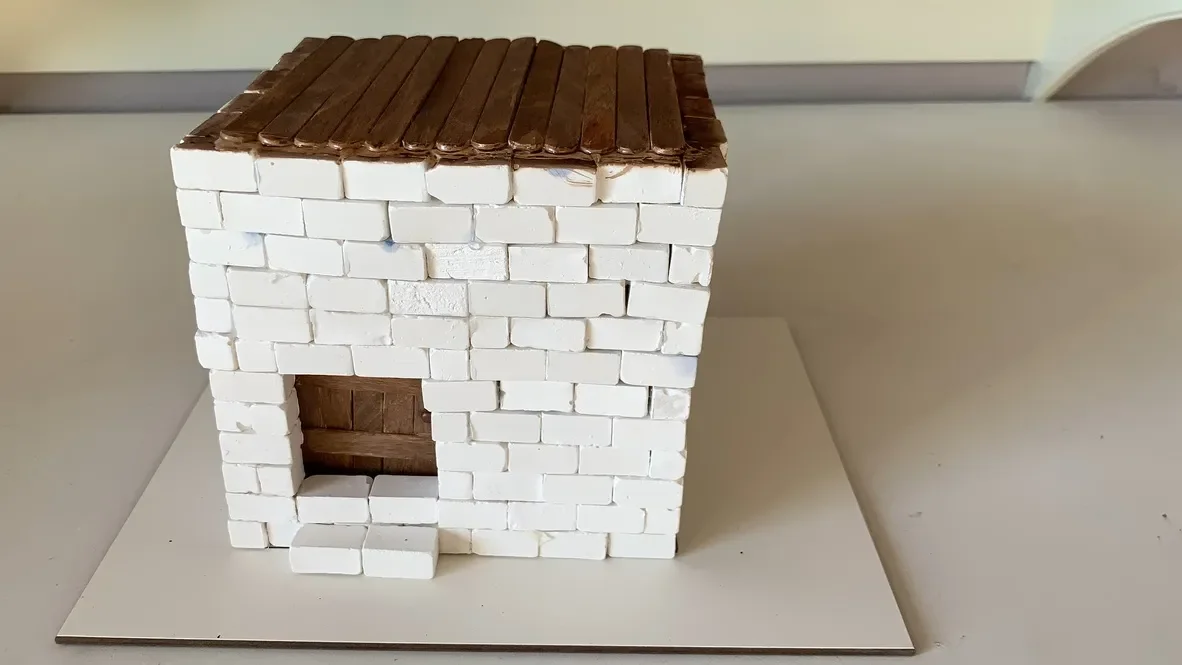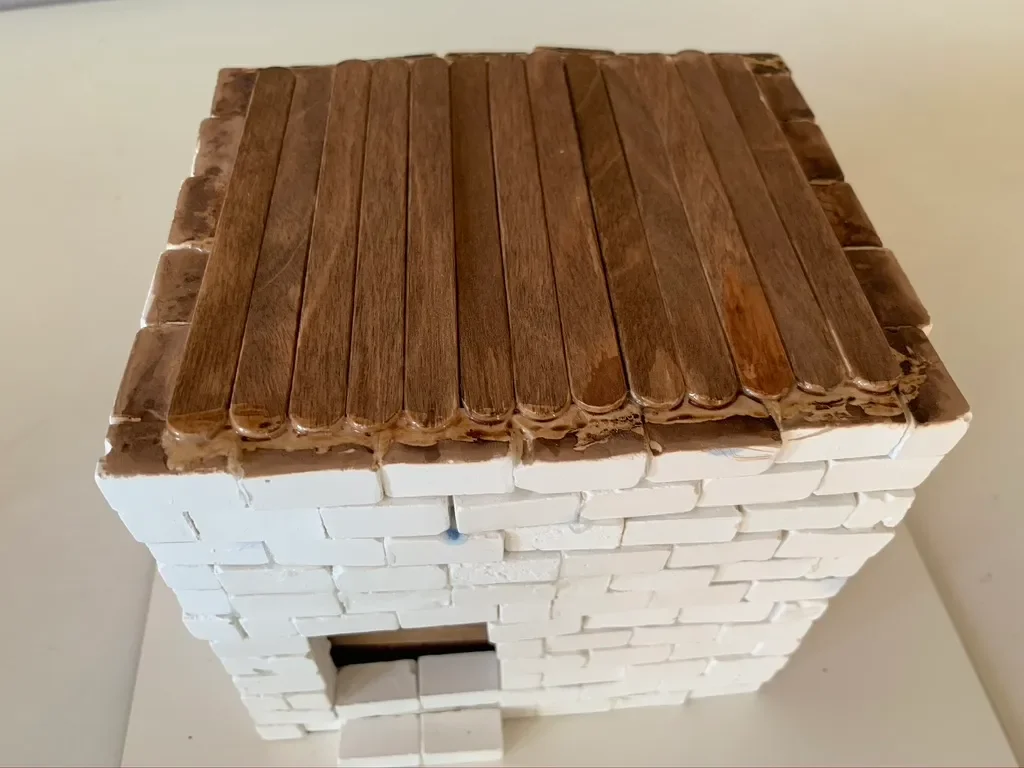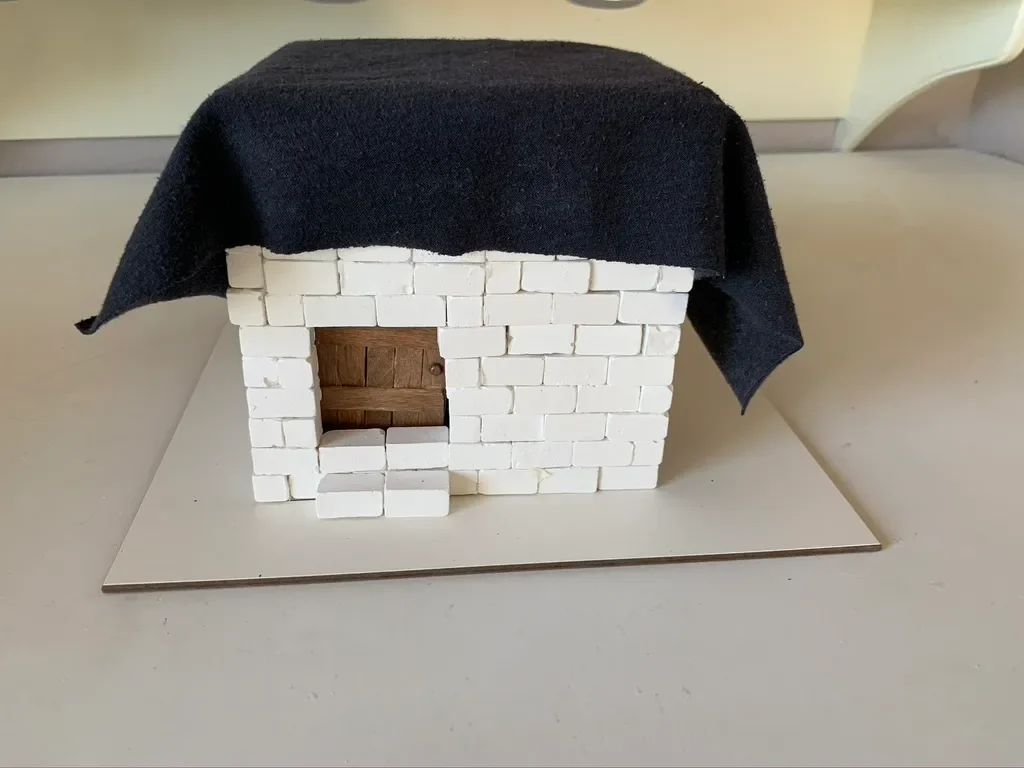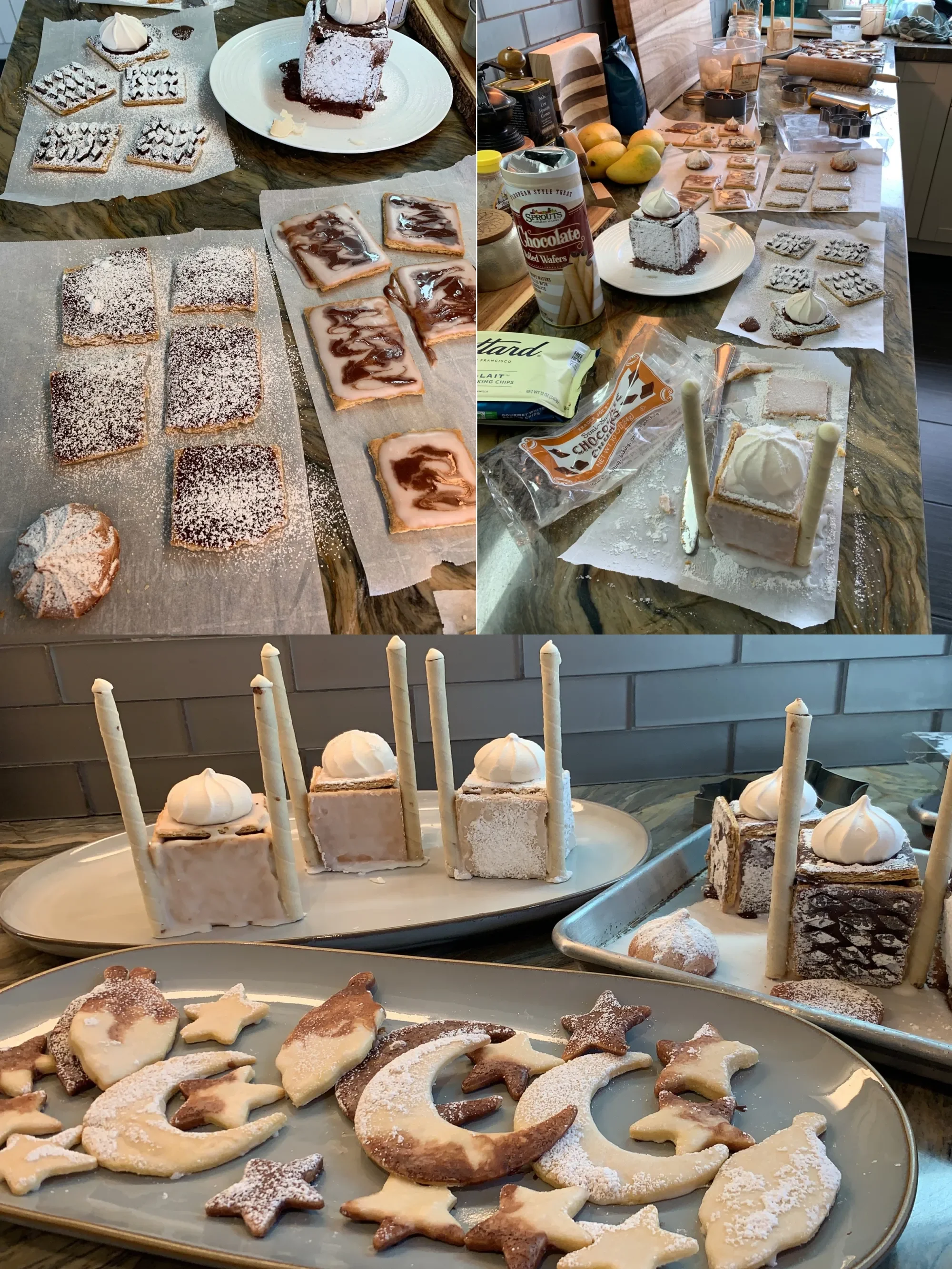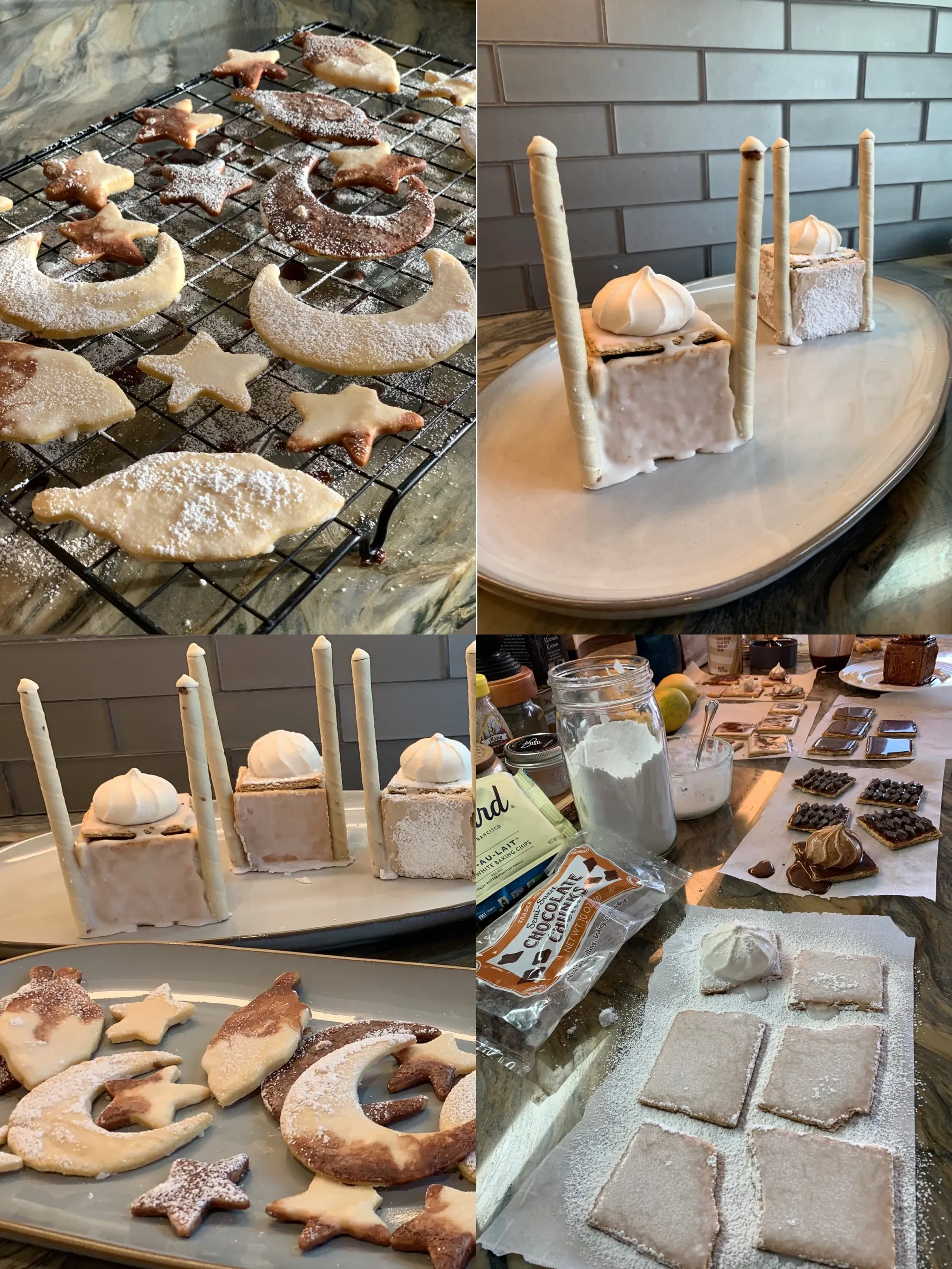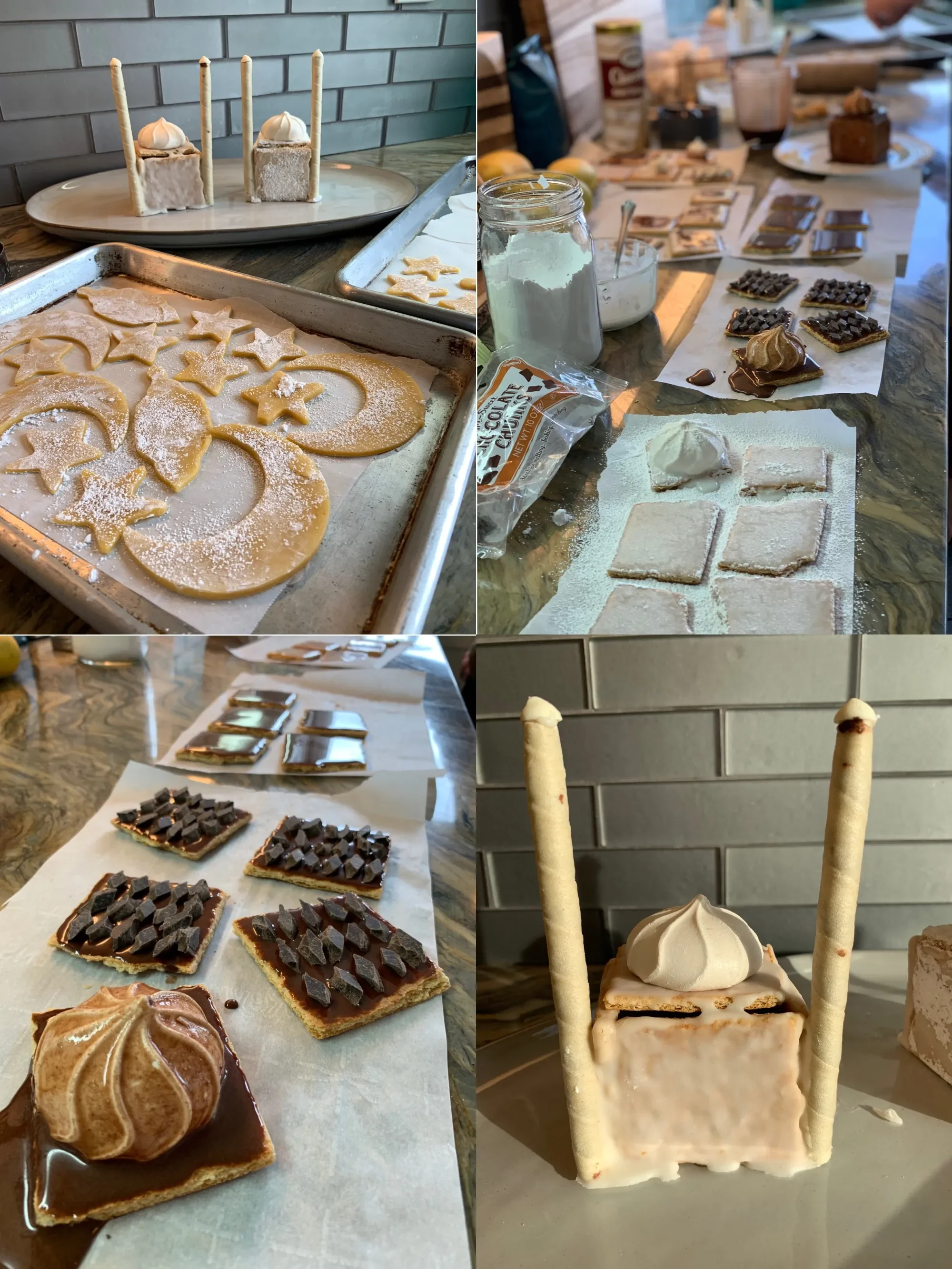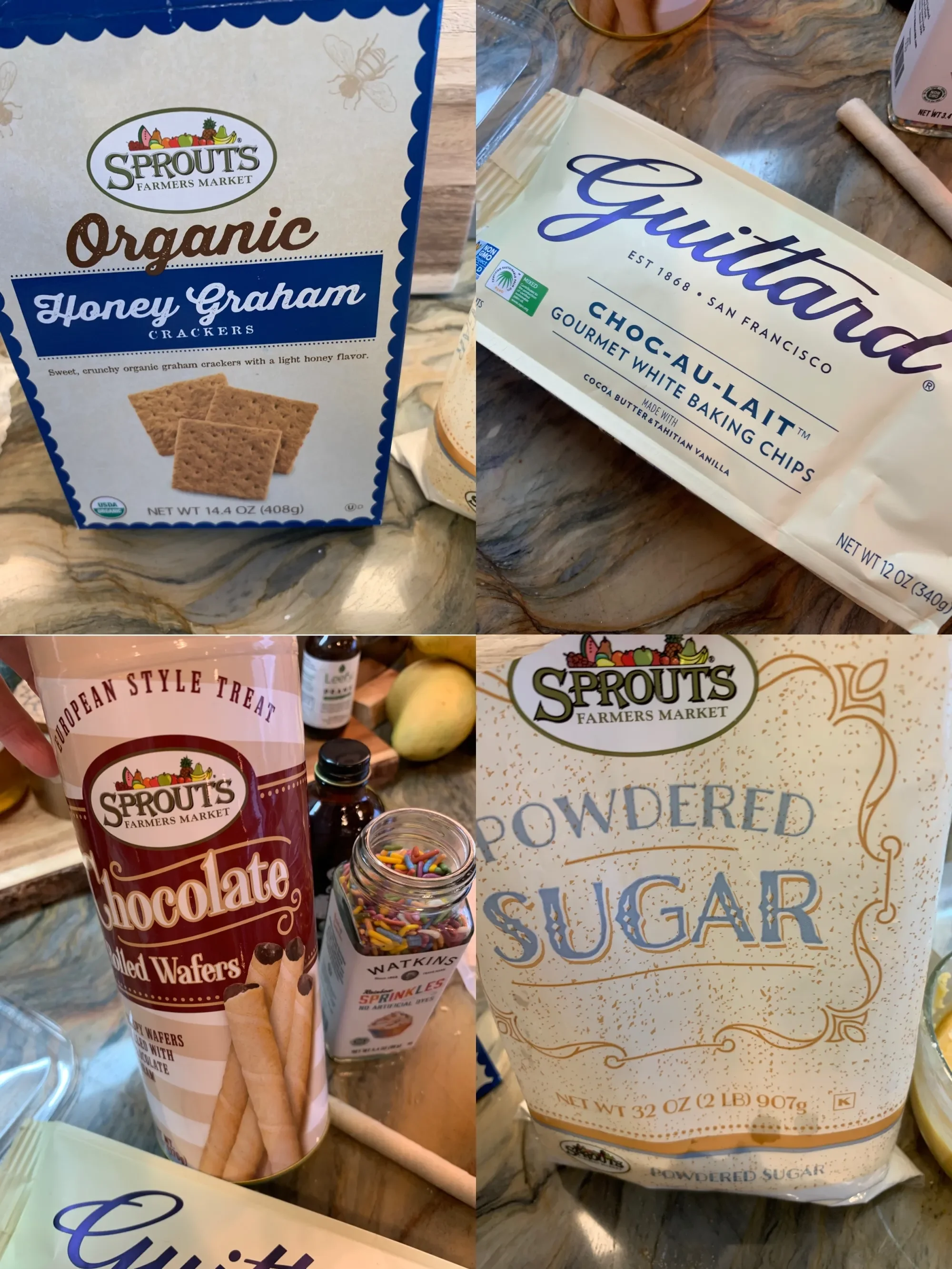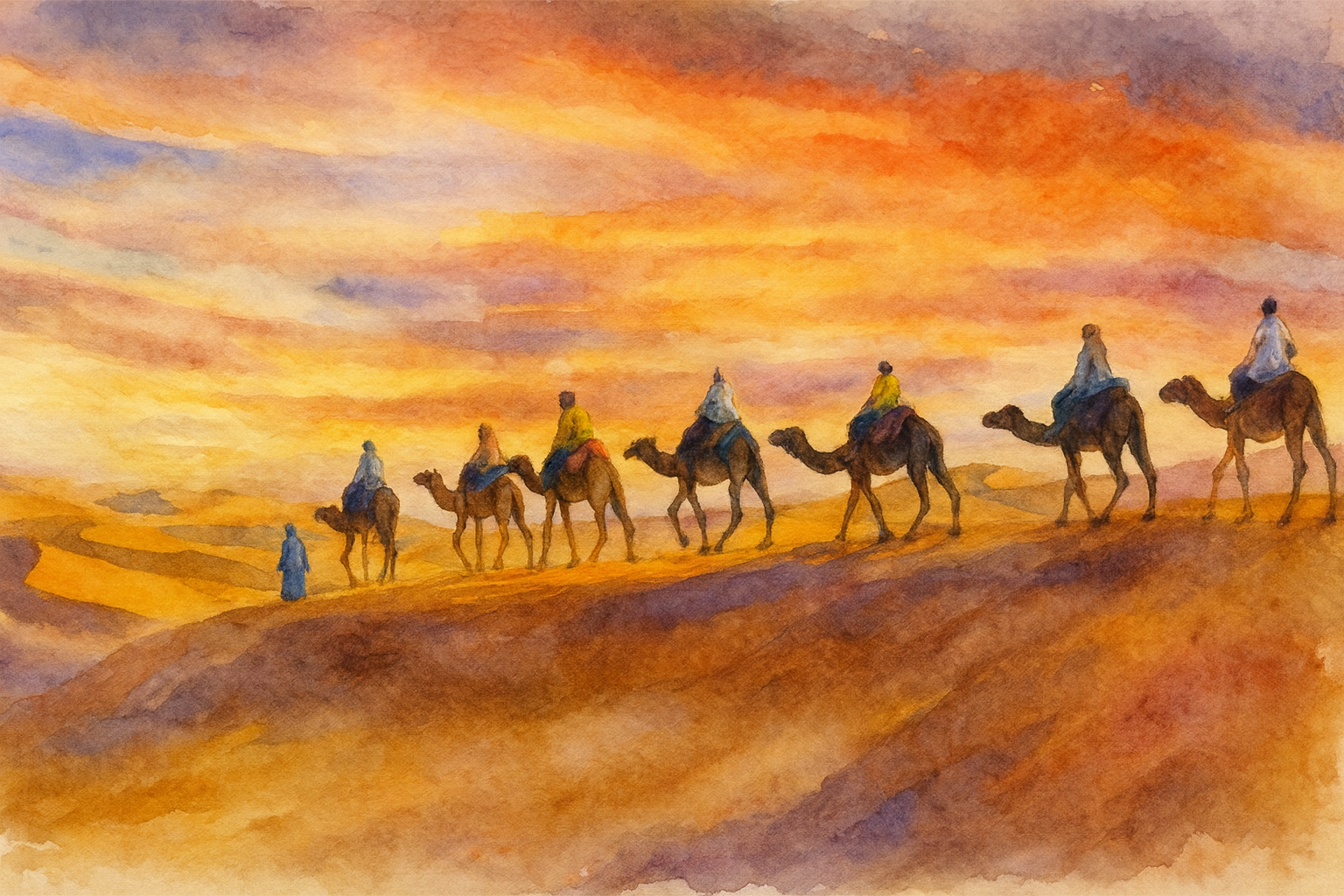
Golden Age of Islam
Golden Age of Islam
Are you curious what was going on in the rest of world while Europe was deep in the Dark Ages? While it's considered the Middle Ages or Medieval Times in Europe, other parts of the world had been civilized and had been flourishing for centuries, even millinias. Let's explore other parts of the world together. I have a series of Main Lesson Blocks and Unit Studies that explore North Africa and Ibn Battuta, West Africa and Mansa Musa, Mongolia and Genghis Khan, Ancient China, China and Kublai Khan, The Silk Road and Marco Polo and the Muslim world of Arabia, Persia and the Ottoman Empire with notable historical figures such as Ibn Haytham, Ibn Sina, Khalid ibn al Walid, Saladin and more.
Golden Age of Islam
-
Islamic Books on Muslim Biographies
These book accompany our Islamic Empire Main Lesson Block and were gifted to me by Siraj Bookstore.
-
Islamic Books and Resources
When my children were young, there were a small selection of Islamic picture books for children and a few innovative books and journals for young adults. I'm exceedingly pleased that the variety has grown tremendously in the last couple decades.
-
Top 5 Books on Hijab + Bonus Books
I share my top 5 books on hijab in addition to another five books that I feel relate in one way or another. While there are books I love, there are a few I'm sharing that I don't love and don't plan to read again
-

Learn About Islam | Children's Books
The book selections I am sharing with you are suitable for all faiths and ages. While they are primarily children's books, I find them to be both enjoyable to read and educational for children and adults. In fact, I think children's picture books are an overlooked genre.
-

The Golden Age of Islam
Are you curious what was going on in the rest of world while Europe was deep in the Dark Ages? While it's considered the Middle Ages or Medieval Times in Europe, other parts of the world had been civilized and had been flourishing for centuries, even millennia. Let's explore other parts of the world together.
-
Lesson Plans
Our main lesson blocks and unit studies are book rich which means you don't need to buy a curriculum to do them, but you will need books. Many of these books can be found at the library, and if not, I share with you how you can swap out books and other resources for the materials you have.
-

How to Draw a Medieval Castle & Mosque | Chalk Drawing
We're kicking off our Middle Ages main lesson block with a chalk drawing that will serve for our Middle Ages and Silk Road units. I put this unit together using resources from various vendors as well as the Live Education Waldorf homeschool curriculum.
-

How to Draw the Blue Mosque
I chose to draw the Hagia Sophia for a few reasons. I wanted a scene that would work for our Ramadan lessons and provide a beautiful backdrop to our homeschool during this time, but also something that could transition into our Middle Ages and Silk Road unit that's coming up in the following school year.
-
Ramadan Calendar Tutorial
Making a Ramadan Calendar for you and your kids is a great way to track this blessed month. There are so many different ways to do it, and this is just one color, crafty method.
-

DIY Historic Kaaba
While working through our West Africa main lesson block, we learned about Mansa Musa and his great pilgrimage to Makkah to perform Hajj. He is reportedly the wealthiest man in recorded history and carried so much gold to give as charity that he crashed the markets in Egypt with in the influx of gold.
-
Graham Cracker Masjid
You can assemble simple project with ingredients you can find at a local grocery store. Of course you can make it from scratch as well. I found that even with store bought graham crackers, meringues and wafers assembling and decorating took a big chunk of time.
-
DIY Dome of the Rock Foam Kit
We used this DIY Dome of the Rock foam kit as part of our Golden Age of Islam unit study for our homeschool. This kit is older and may be harder to find so if you have access to it, I recommend you get it before it's no longer available.
-

Designing Historical Geometric Tile Patterns
For this lesson, we used some additional books and resources to help us complete this design. We used the books: Islamic Geometric Patterns by Eric Broug, Islamic Geometric Patterns by Eric Broug, Islamic Design Workbook by Eric Broug and Islamic Design: A Genius For Geometry by Daud Sutton.
-

Six Division of a Circle | Islamic Geometric Patterns 
While we continue our work for our Waldorf Main Lesson Block for Geometry, we departed from the lessons to include some projects that are culturally significant for us and historically relevant for our upcoming history blocks.
Recipes

Resources, Chalk Drawings & Projects
Islamic Books on Muslim Biographies
These book accompany our Islamic Empire Main Lesson Block and were gifted to me by Siraj Bookstore.
Ramadan Haul | Islamic Books and Resources
When my children were young, there were a small selection of Islamic picture books for children and a few innovative books and journals for young adults. I’m exceedingly pleased that the variety has grown tremendously in the last couple decades. I’m sharing some books that have been in our home library for years as well as brand new additions. While we used to read the Seerah (Life of the Prophet, peace be upon him) yearly, reading passages daily during homeschool, we now read it during Ramadan.
Included in the most recent haul, are two embroidery kits. I once heard of a woman who used to do her dhikr with every stitch or knit. I loved the idea but never implemented it. Now that we have these two kits, I think Ramadan is the perfect time to do dhikr while doing cross stitch.
If you’d like to purchase any of the items in this Ramadan haul, you may do so. When possible, buy directly from the publisher or vendor, for ease of sharing, Amazon is linked often with affiliate links, but I encourage you to buy directly when possible.
Shopping Guide
Top 5 Books on Hijab + Bonus Books
When I was growing up, I don’t remember there being books on hijab. Not that I was looking for them or expecting them. As a half American, half Arab Muslim girl growing up in the suburbs of southern California, my surroundings, culture and community were are western. The curious thing about that is looking out for my eyes, I saw uniformity…no one at school was wearing hijab. I was the only one until nearly my senior year in high school. So I wasn’t the one who had to deal with someone wearing clothes that were different than the norm, my friends did. They learned to deal with the girl in hijab in school, and looking back I can say I grew up surrounded by friends who embraced and accepted me as any other child. And I embraced and accepted them too. Not until I was an adult with children of my own did I appreciate the uniqueness of my childhood. I was either oblivious to the people who were disagreeable or aggressive because of my Islam, or I didn’t encounter anyone like that.
I share my top 5 books on hijab in addition to another five books that I feel relate in one way or another. While there are books I love, there are a few I’m sharing that I don’t love and don’t plan to read again. I wanted to share them as my top 5 because those are the books I have and even recently purchased to add to our small collection. In truth, I haven’t found many picture books on hijab as compared to other topic areas. I feel there is so much that can be shared from people’s experience that looking forward to seeing how the books in this subject area grow.
In addition to the books on hijab, I’ve included books about refugees. Since the majority (I don’t have referencing to site at this time), I thought adding them here would complement the subject area.
Learn About Islam | Children's Books
The book selections I am sharing with you are suitable for all faiths and ages. While they are primarily children’s books, I find them to be both enjoyable to read and educational for children and adults. In fact, I think children’s picture books are an overlooked genre. Aside from them being beautifully illustrated, I’ve mostly found that children’s picture books are written with high quality, easy-to-understand language making them especially great for children and adults. What I also like is that children of multiple ages can also enjoy a single picture book. Young children delight in the illustrations and pick up the content that’s understandable for their age and older children may gather more from the content but still enjoy the illustrations. In my experience, I’ve also found that I learn a lot! I love picture books for that reason. I learn in an easy, educational and enjoyable format. The simplicity, but not rudimentary style of children’s picture books makes them ideal for all audiences.
The Biography of the Noble Prophet by Lina Al-Keilany, is well written and easy to understand. This set of 20 paperback books, is written at a 4th or 5th grade level. The books are workbook size and quality and are about 15 pages each. While each book can be purchased on its own for about $6, you can get the whole set including a sturdy box to hold the 20 books for about $100. This is definitely a pricey option for seerah books.
I really like this set. It’s easy to read, nicely illustrated and broken up into smaller books. The decorative box is lovely and well-made.
The downside is largely the price. I think it’s excessive for the quality of book you’re getting. It’s simply made with a staple binding. Tell Me About Series Tell Me About Series (Muhammad, Musa, Yusuf and Hajj) by Saniyasnain Khan
In this video, I shared a Biography of the Prophet Muhammad (saw) for which I have made a separate video detailing this series.
DK Eyewitness Book Islam by Caroline Stone, Batul Salazar (Editor)
Goodnight Stories books, links below
Goodnight Stories from the Life of the Prophet Muhammad by Saniyasnain Khan
Here are some of our favorite picture books
Ramadan by Suhaib Hamid Ghazi (Author), Omar Rayyan (Illustrator)
The Spider and the Doves: The Story of the Hijr by Farah Morley (Illustrator)
The Grand Mosque of Paris by Karen Gray Ruelle (Author), Deborah Durland Desaix (Author)
Golden Domes and Silver Lanterns by Hena Khan (Author), Mehrdokht Amini (Illustrator)
Prophets of Allah volume I-IV by Suhaib Hamid Ghazi and various authors and illustrators published by Iqra International Educational Foundation
The Golden Age of Islam
Are you curious what was going on in the rest of world while Europe was deep in the Dark Ages? While it's considered the Middle Ages or Medieval Times in Europe, other parts of the world had been civilized and had been flourishing for centuries, even millinias. Let's explore other parts of the world together. I have a series of Main Lesson Blocks and Unit Studies that explore North Africa and Ibn Battuta, West Africa and Mansa Musa, Mongolia and Genghis Khan, Ancient China, China and Kublai Khan, The Silk Road and Marco Polo and the Muslim world of Arabia, Persia and the Ottoman Empire with notable historical figures such as Ibn Haytham, Ibn Sina, Khalid ibn al Walid, Saladin and more. Today's video centers on the time period of early 600s through to about the 1200s and covers the area of Arabia and what is modern day Iran. I have some resources on Ottoman Turkey as well and Saladin and the crusades.
These resources focus on the time period of early 600s through to about the 1200s and covers the area of Arabia and what is modern day Iran. I have some resources on Ottoman Turkey as well and Saladin and the crusades.
Lesson Plans
Lesson Plans! Do you do them? Do you want them done for you? I share a little of how I lesson plan and walk you through 5 lesson plans that are now available on my website. Our main lesson blocks and unit studies are book rich which means you don't need to buy a curriculum to do them, but you will need books. Many of these books can be found at the library, and if not, I share with you how you can swap out books and other resources for the materials you have. Each lesson plan comes with information on how to use the lesson plans, a bit about how I structure our unit studies and why I offer all grade levels in one lesson plan. I've included grade levels in case you want to focus on a particular level or on specific content, but since everything is included in one plan, you can easily mix and match resources to suit your needs.
Welcome to the Lesson Plans for The Golden Age of Islam Unit Study. When we initially decided to broaden our European Middle Ages main lesson block, we didn’t realize that it would become a 4 year extension! So far, what began as our Silk Road unit became multiple units as each subject area became its own unit. Currently we have units for The Silk Road, Ancient China, Mongolia, West Africa and The Travels of Ibn Battuta.
When putting together these lesson plans, I realized I had far too broad a range of books than could be contained in a short unit study dedicated to a 3-4 year grade range. Usually I am able to create lessons which work for multiple grades and student interests. This unit, however, includes material that’s best suited for high school level and adult so it doesn’t easily work for all grades.
To accommodate the material and grade range, I’ve made this unit 12 weeks long which would be best implemented in 3-4 week blocks throughout 3-4 times in a year or over multiple years in conjunction with other history lessons.
I’ve also included all the materials (books and kits), tutorials, projects and recipes for all 12 grades so you can mix and match the books and lessons you wish to use.
If books or kits are not available or you have other materials you wish to use, please make adjustments as you see fit. These lesson plans may be used as a guide for inspiration rather than a rigid course of lessons. Setting up the lessons in a weekly manner allows for flexibility in how you wish to do the lessons and in which order. The grade range offered is my own estimation, but you will find that your student doesn’t fit that range and you may wish to provide other lessons or modify the materials suggested.
The Golden Age of Islam
Are you curious what was going on in the rest of world while Europe was deep in the Dark Ages? While it's considered the Middle Ages or Medieval Times in Europe, other parts of the world had been civilized and had been flourishing for centuries, even millinias. Let's explore other parts of the world together. I have a series of Main Lesson Blocks and Unit Studies that explore North Africa and Ibn Battuta, West Africa and Mansa Musa, Mongolia and Genghis Khan, Ancient China, China and Kublai Khan, The Silk Road and Marco Polo and the Muslim world of Arabia, Persia and the Ottoman Empire with notable historical figures such as Ibn Haytham, Ibn Sina, Khalid ibn al Walid, Saladin and more. Today's video centers on the time period of early 600s through to about the 1200s and covers the area of Arabia and what is modern day Iran. I have some resources on Ottoman Turkey as well and Saladin and the crusades.
These resources focus on the time period of early 600s through to about the 1200s and covers the area of Arabia and what is modern day Iran. I have some resources on Ottoman Turkey as well and Saladin and the crusades.
How to Draw the Blue Mosque
Erasing the chalk drawing is never easy. It’s hard for two reasons, one because I usually really like it and want to keep it up forever, and the other reason is the daunting pressure to create something new. The blank black chalkboard is not inspiring for me at all. It’s rather stressful actually. I know the finished artwork contradicts my non-artistic abilities, but I think when you see the several attempts I go through, you’ll have a better understanding of how challenging artwork actually is for me. So since it’s challenging for me, I’d like to offer a few tips.
Tip 1: Copy. Don’t worry about coming up with something you imagine. Even artists copy something, be it a live scene, a photographs or something else.
Tip 2: Copy in the same medium as you are using. This isn’t always feasible, but I find it more challenging to copy from a photograph.
Tip 3: Try. You won’t know if you don’t try it. You may not even know your own abilities or talents. It certainly takes practice, but you might surprise yourself.
EDIT: I drew the Blue Mosque, but called Hagia Sophia. I confused the two thinking they were the same. I’ll decide what to do later when I get to our Middle Ages and Silk Road unit. Here’s what I originally wrote for this post:
I chose to draw the Hagia Sophia for a few reasons. I wanted a scene that would work for our Ramadan lessons and provide a beautiful backdrop to our homeschool during this time, but also something that could transition into our Middle Ages and Silk Road unit that’s coming up in the following school year. The Hagia Sophia has a long history. It was a cathedral for most of its history, but when the Muslims conquered Constantinople, the city was renamed Istanbul and the cathedral was converted into a mosque. The chalk drawing on the right will be erased to make room for a Medieval castle or something related to the Silk Road, while the Hagia Sophia will remain, at least that’s the plan.
You can check out the Botany Chalk Drawing I had to erase to draw Hagia Sophia.
I searched online for images to copy, and after a few attempts, I referred to a few books in our personal library. The Mosque of Cordoba Told to Children, 16th Century Mosque and Golden Dome, Silver Lantern came in handy, but I ended up finding inspiration for this drawing from a drawing I found online. You can see more artwork from this artist, Candace Roserardon, here:
Here’s the tutorial on how I painted our slate chalkboard.
Ramadan Calendar Tutorial
Making a Ramadan Calendar for you and your kids is a great way to track this blessed month. There are so many different ways to do it, and this is just one color, crafty method.
You can find our Ramadan Sahaba inserts here.
Find the Ramadan Inserts and other Ramadan projects here.
Today's project is a Ramadan Calendar using 100% wool felt from A Child’s Dream.
We used the Holland wool variety pack of 12"X12" squares for the pockets of the calendar cutting them down to 2.75"X2.5"and the Premium all-wool pre-cut 18"X18" squares for the backing of the calendar.
As the video cut out before the project was completed, I don't show how the calendar was hung. I purchased a 1/8" or 1/4" dowel from Michaels and cut it down to about 19 inches. I sewed a casing for it and fitting the dowel through it. I strung twine from the ends of the dowels and hung it on the wall using a Command hook.
I used the Silhouette Cameo program and cutting tool to design inserts for the calendar. For Ramadan 2014 we wrote in Sahaba stories into a fold out card insert with tabs that said "Day 1, Day 2, etc." For Ramadan 2015, we made "Make Dua For" inserts so we could keep track of the duaas we wanted to make during Ramadan.
The circular wood numbers were from Freckled Fawn.
and the individual numbers were from Craft Cuts.
Other wood veneer used (the stars near the title) was from Studio Calico.
Wood veneer that wasn't used but was shown was from the Recollections brand from Michaels.
Tombow Mono Aqua glue (blue label) was used to adhere the wood numbers to the felt.
Other tools needed for this project:
Sewing machine, pencil, ruler, scissors, straight pins and thread.
DIY Historic Kaaba
While working through our West Africa main lesson block, we learned about Mansa Musa and his great pilgrimage to Makkah to perform Hajj. He is reportedly the wealthiest man in recorded history and carried so much gold to give as charity that he crashed the markets in Egypt with in the influx of gold. This was in the 14th century at a time when Europe was still experiencing its Dark Ages. To see the rest of the world prosper, gain wealth and knowledge and make great discoveries in science and medicine was a stark difference from what was transpiring in Europe. I’m disappointed that the Middle Ages is focused on Europe as if the rest of the world didn’t exist. In fact, because of the Silk Road, travel and trade, there was much exchange of goods, ideas and resources. While studying the rest of the world during the Middle Ages, we came up the empires of Ghana, Mali and Songhai. While learning about these, we discovered the wealthiest man, Mansa Musa, and his massive caravan to Makkah.
For our main lesson block on West Africa and the empire of Mali and the leader Mansa Musa, we collected a number of resources to use. What we couldn’t find, we hands-on kits and projects for with to supplement our unit. As a result, I repurposed a Medieval castle building kit to make our replica model of the Kaaba. While I’m pleased with our ingenuity and creativity, I’m not super pleased with the end result. Our Kaaba doesn’t look like the Kaaba. It’s quite plain in our attempt to recreate a historically accurate depiction of what the Kaaba might have looked like in the 1300s. We did cut a piece of black T-shirt material to drape over the top, but that looked worse. I also wanted to put the Black Stone on the southeast side of the Kaaba, but didn’t find a way of recreating the encasement. We chose a limestone color for our bricks, but they may have been more grey. We used a brick mold from our castle kit and undyed plaster of Paris. We stained popsicle sticks for the roof and made our door with them as well. In the end, I’m glad we made it, but I wish there was a pre-made kit available with more historically accurate supplies.
Graham Cracker Masjid
You can assemble simple project with ingredients you can find at a local grocery store. Of course you can make it from scratch as well. I found that even with store bought graham crackers, meringues and wafers assembling and decorating took a big chunk of time. We also made crescent and star cookies with some icing I made that didn’t work (not shown in the video). This festive project brings joy to my children and creates deep loving memories for Ramadan. Of course you could do this project anytime of year. This project and 28 more can be found in my Ramadan Blessings in a Box project that is part of the Ramadan Bundle which is on sale now! The bundle includes 8 projects I made for my children and their friends that we have been enjoying over the years. The product is digital and the activities are simple. All you need is some basic office supplies.
For this Graham Cracker Masjid, all you need is a box of graham crackers, some wafer cookies for the minarets, white chocolate chips for decorations on the top of the minaret, meringue cookies (large) for the dome of the masjid and some powdered sugar to make the icing and ‘glue’. Mix 1 cup of powdered sugar with a tablespoon of water. You want the consistency of the icing to be smooth but not to watery. The thicker the better for ‘glue’ and a bit more watery works well for icing. Go slowly with the water. It’s easy to add too much. I did so when I was mixing the chocolate icing. Snap graham crackers in half. If you want to decorate the sides of the masjid, do it before assembling it. Add icing to five graham cracker halves. Add sprinkles or chocolate chunks. Or leave it simple with icing and powdered sugar. Add icing to the edges of the graham crackers and hold for a minute until set. Add roof and dome with icing. Add minarets to the front or all four points. Hold in place until icing is set. Let it set and dry completely before moving them off the wax paper.
DIY Dome of the Rock Foam Kit
We used this DIY Dome of the Rock foam kit as part of our Golden Age of Islam unit study for our homeschool. This kit is older and may be harder to find so if you have access to it, I recommend you get it before it's no longer available. My 14-year-old son did this project on his own. The kit is for children 6 years and up, but I find that the younger you are the more adult help you are likely to need. You also have to be gentle while putting this kit together as all the pieces are made of foam with printed paper on top and below. If you crease a tab, it will stay creased and if it's damaged enough, it won't stay in place. It's also easy to bend or damage so be mindful when displaying your finished project.
Designing Historical Geometric Tile Patterns 
For this lesson, we used some additional books and resources to help us complete this design. We used the books: Islamic Geometric Patterns by Eric Broug, Islamic Geometric Patterns by Eric Broug, Islamic Design Workbook by Eric Broug and Islamic Design: A Genius For Geometry by Daud Sutton. We also used large heavy weight watercolor paper by Strathmore, but Fabriano watercolor paper would have been sufficient for this project.
We ended up not completing the whole page with six-division of a circle as it got too tedious, and I noticed that some of my daughter’s circles had become smaller, making the design misaligned. Once we completed our six-divisions and filled most of the page, we began our design. There are several ways to create designs and we included 2-3 within one project. Once we erased extra lines and arcs, we used our watercolor paints to finish off the project.
We are using the Waldorf curriculum from Live Education.
Six Division of a Circle | Islamic Geometric Patterns 
While we continue our work for our Waldorf Main Lesson Block for Geometry, we departed from the lessons to include some projects that are culturally significant for us and historically relevant for our upcoming history blocks.
For this lesson, we used some additional books and resources to help us complete this design. We used the books: Islamic Geometric Patterns by Eric Broug, Islamic Geometric Patterns by Eric Broug, Islamic Design Workbook by Eric Broug and Islamic Design: A Genius For Geometry by Daud Sutton. We also used large heavy weight watercolor paper by Strathmore, but Fabriano watercolor paper would have been sufficient for this project.
We ended up not completing the whole page with six-division of a circle as it got too tedious, and I noticed that some of my daughter’s circles had become smaller, making the design misaligned. Once we completed our six-divisions and filled most of the page, we began our design. There are several ways to create designs and we included 2-3 within one project. Once we erased extra lines and arcs, we used our watercolor paints to finish off the project.
We are using the Waldorf curriculum from Live Education.
